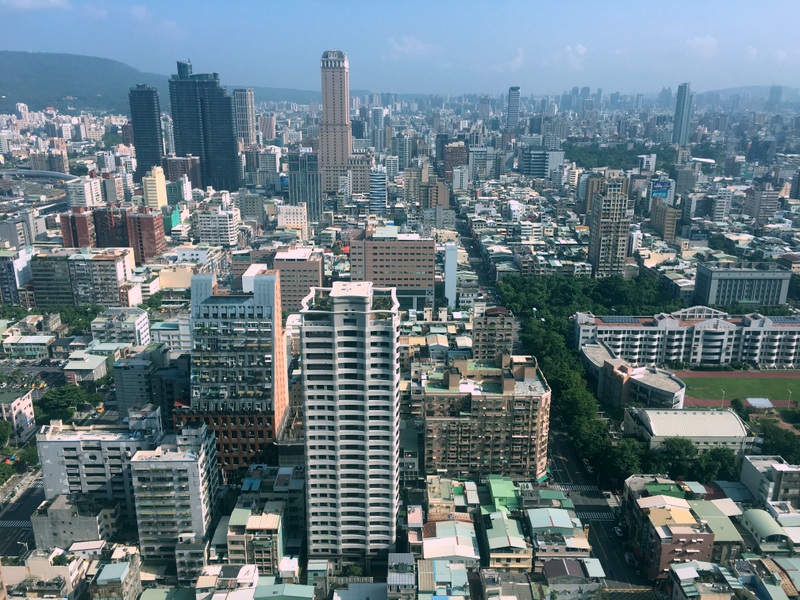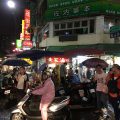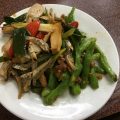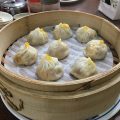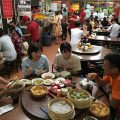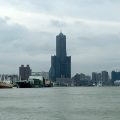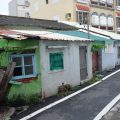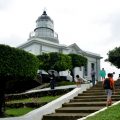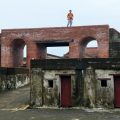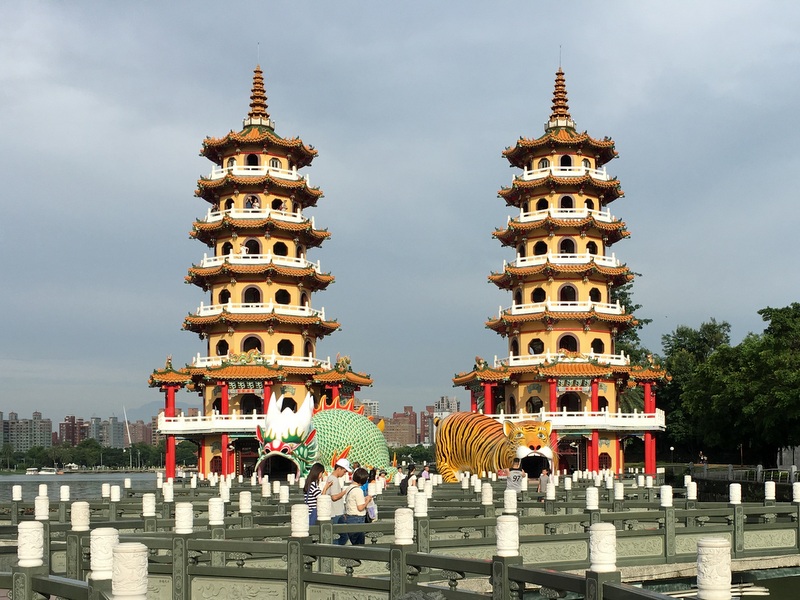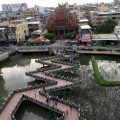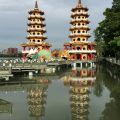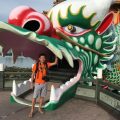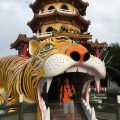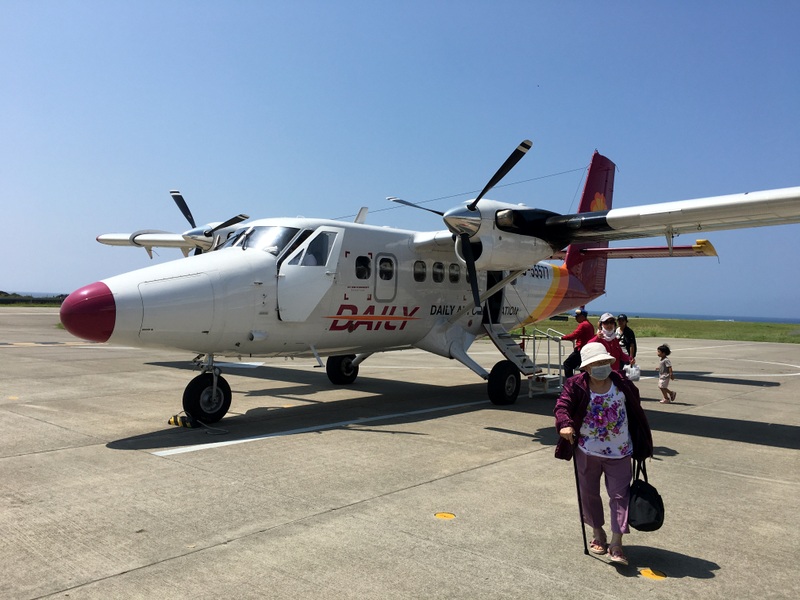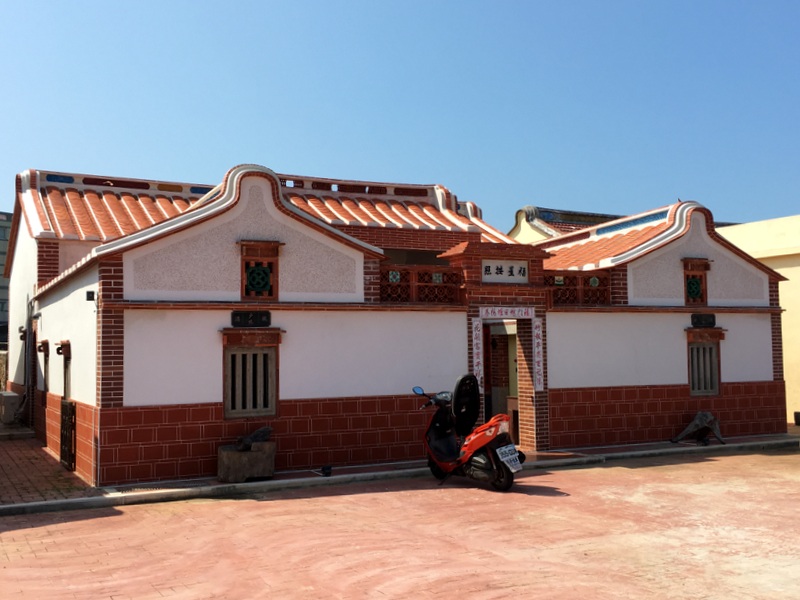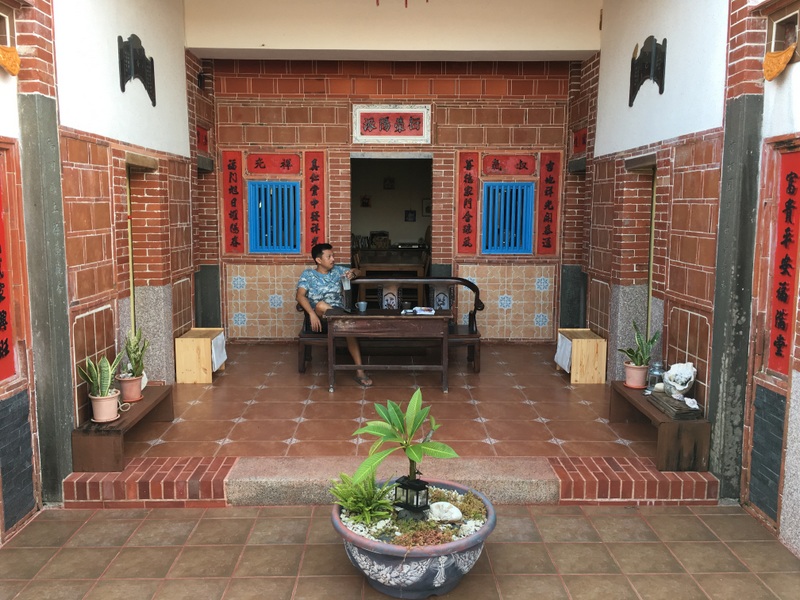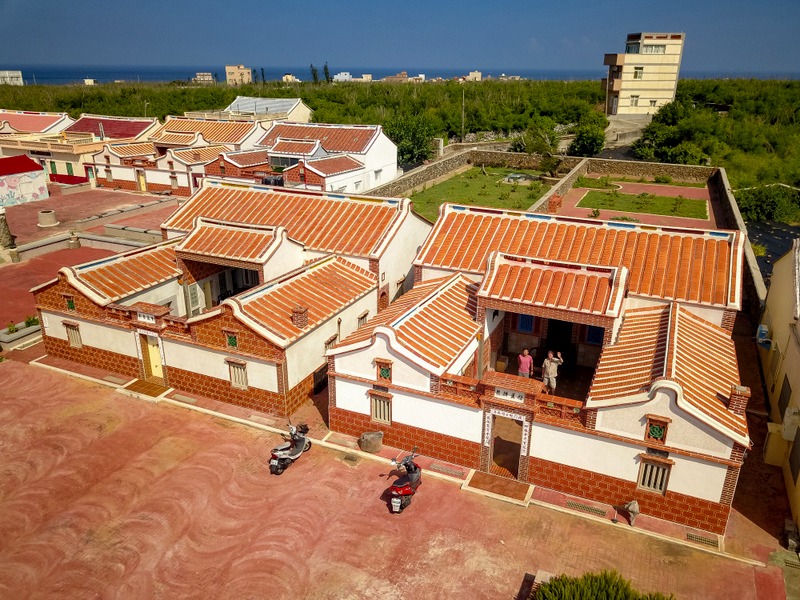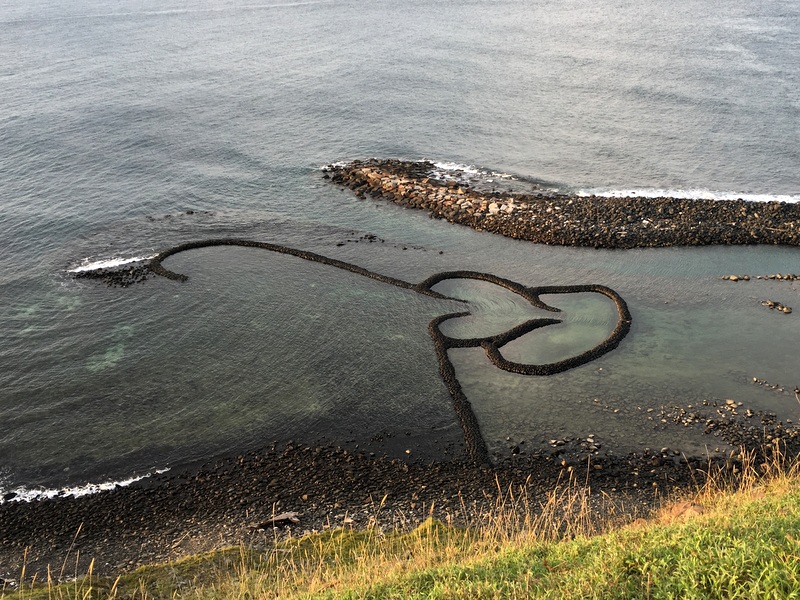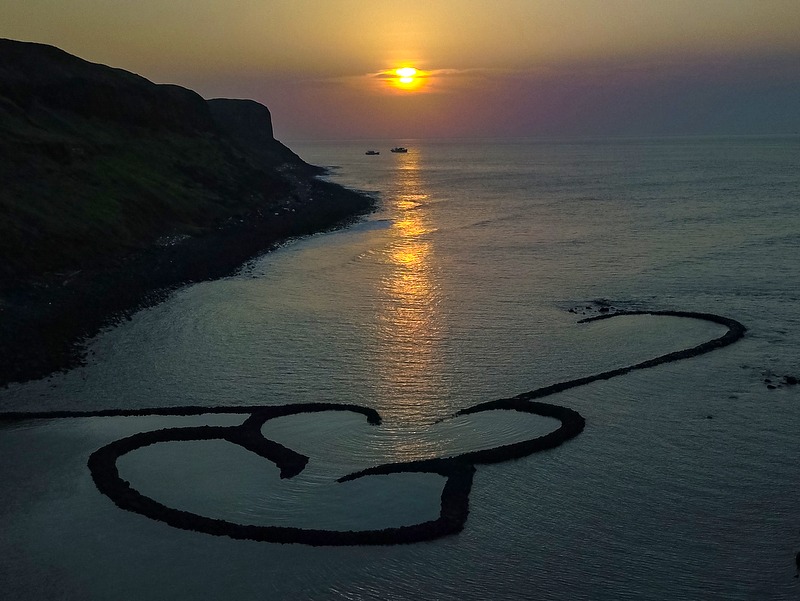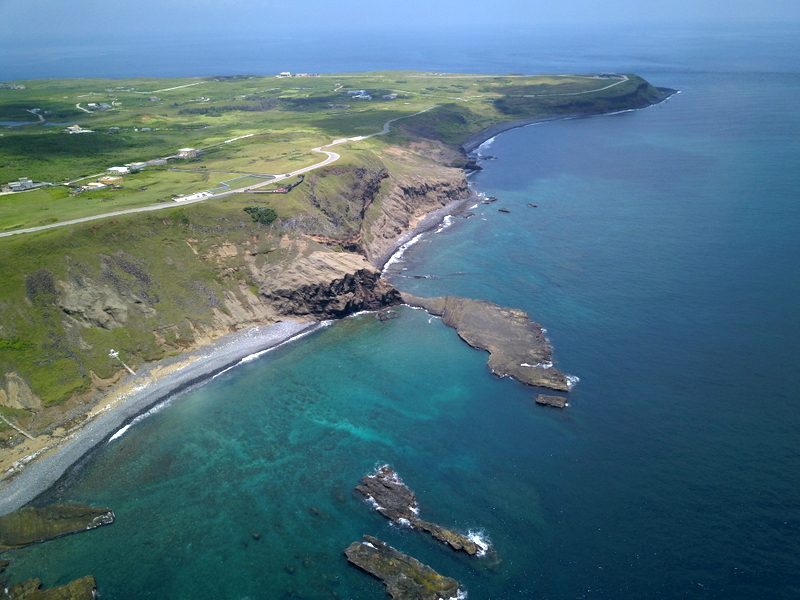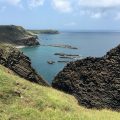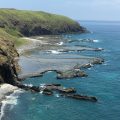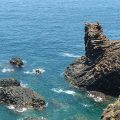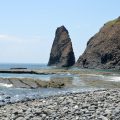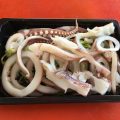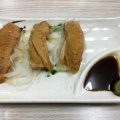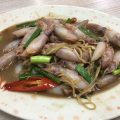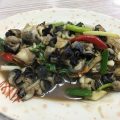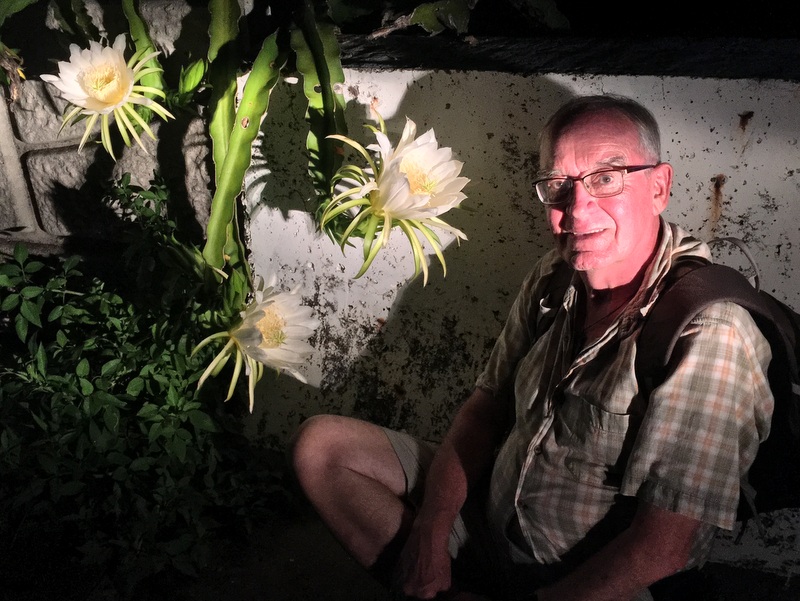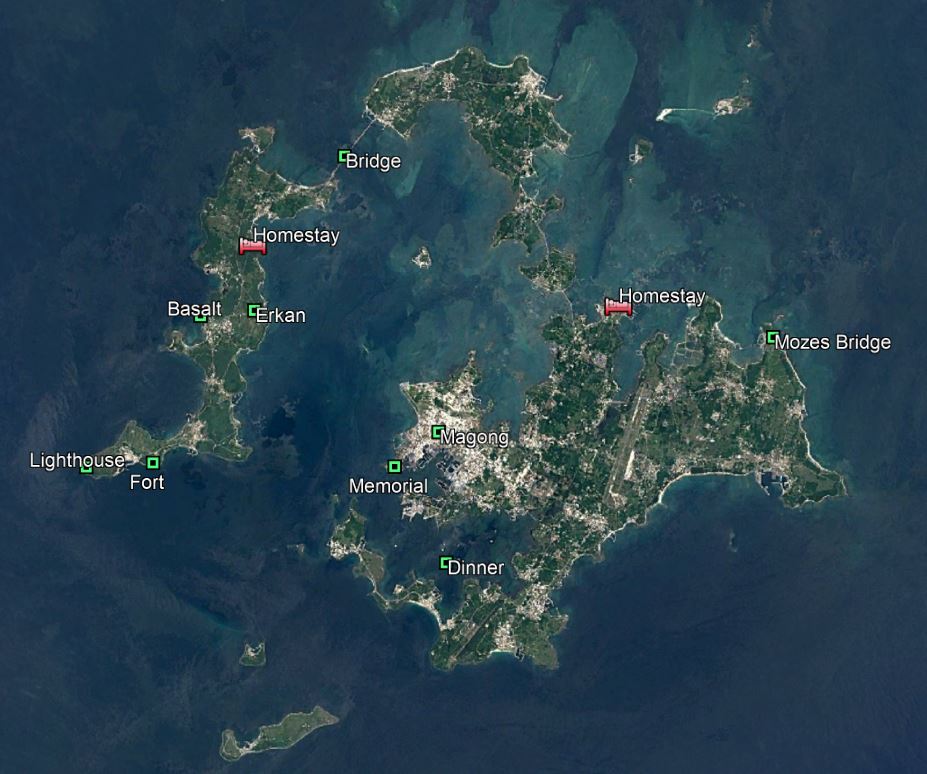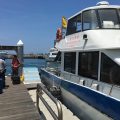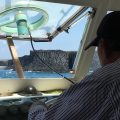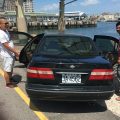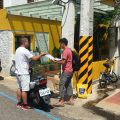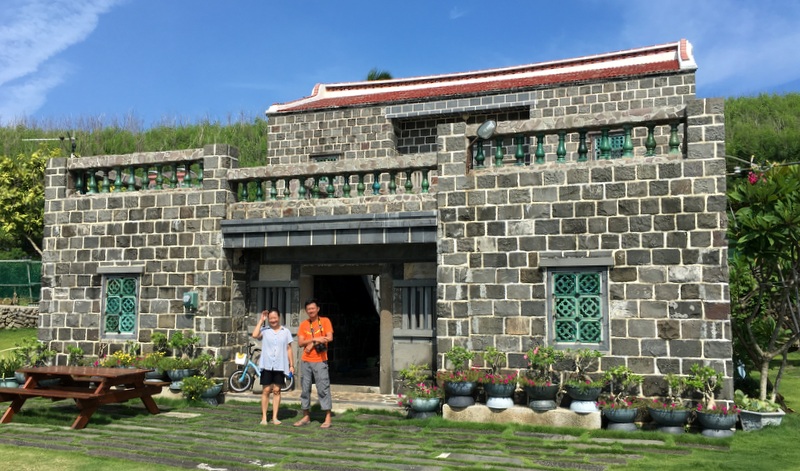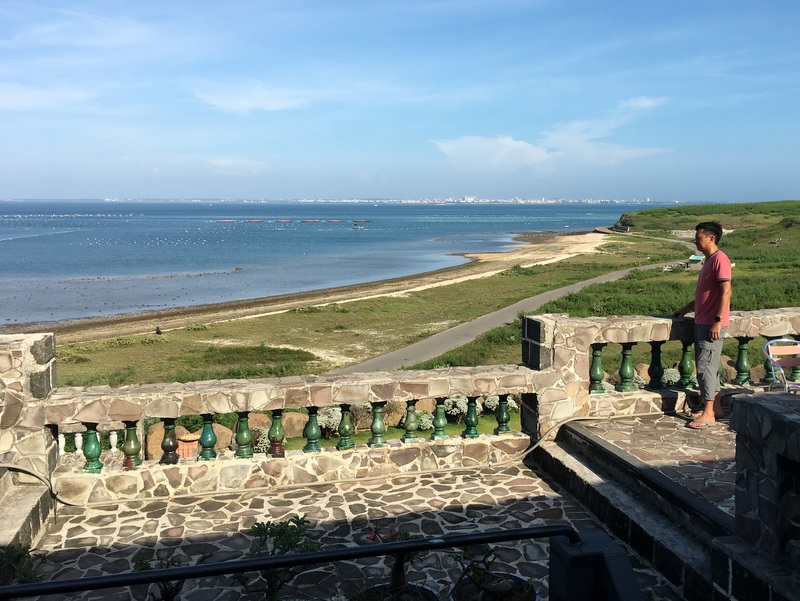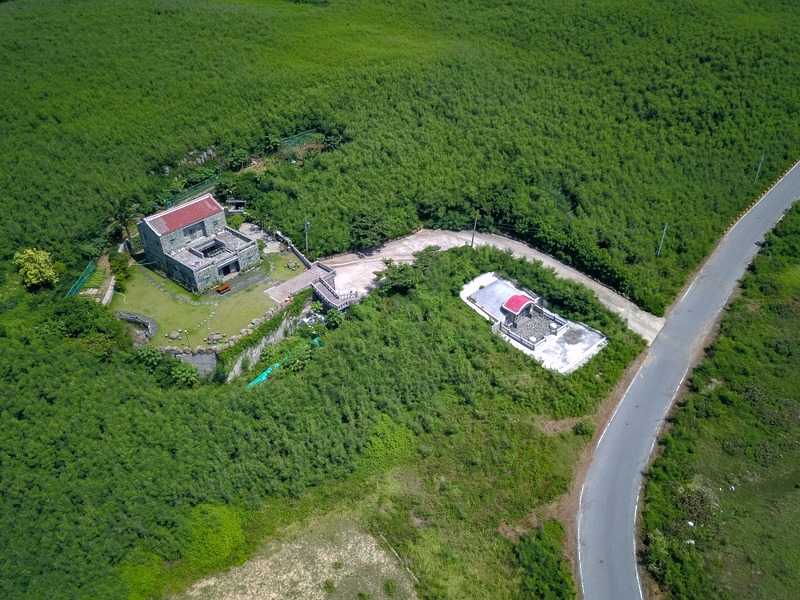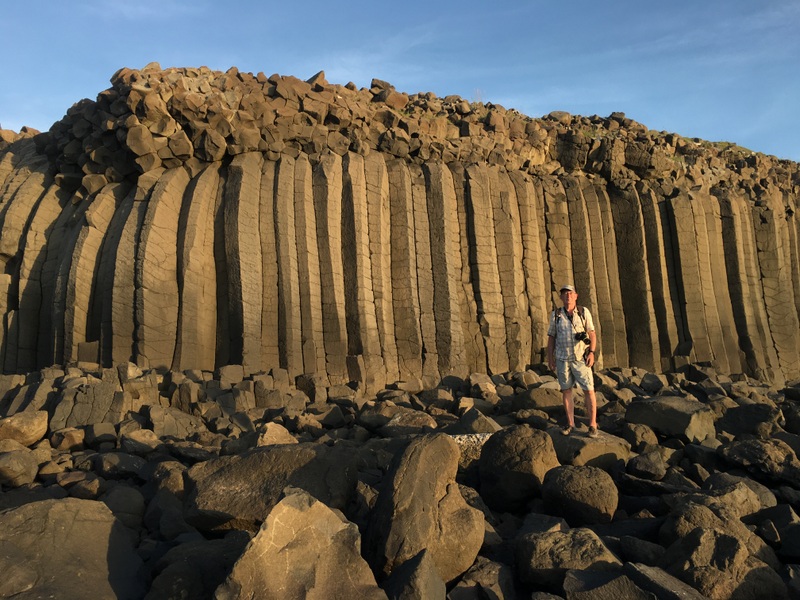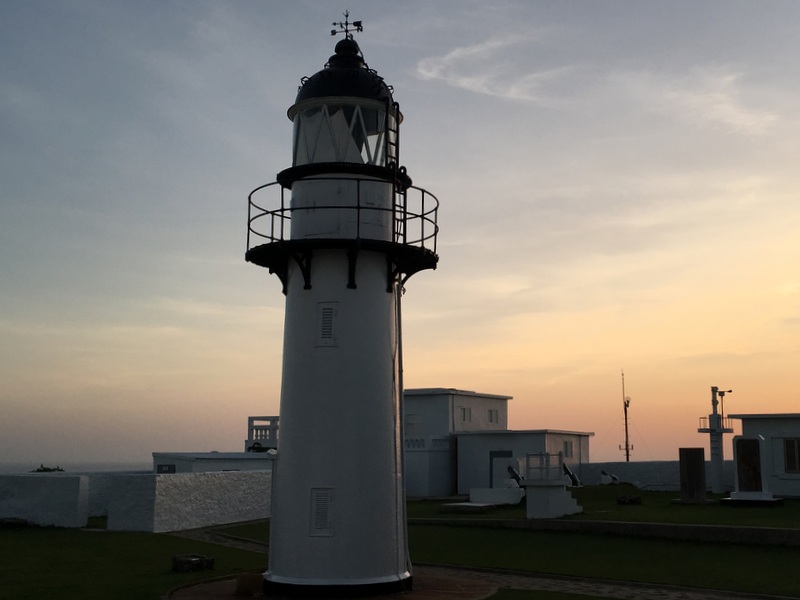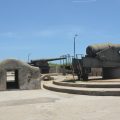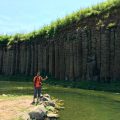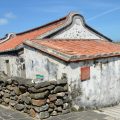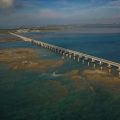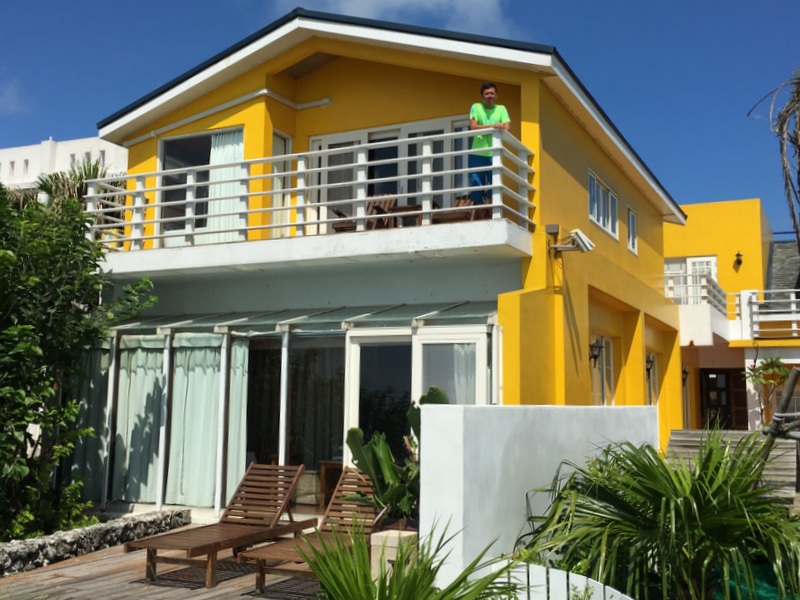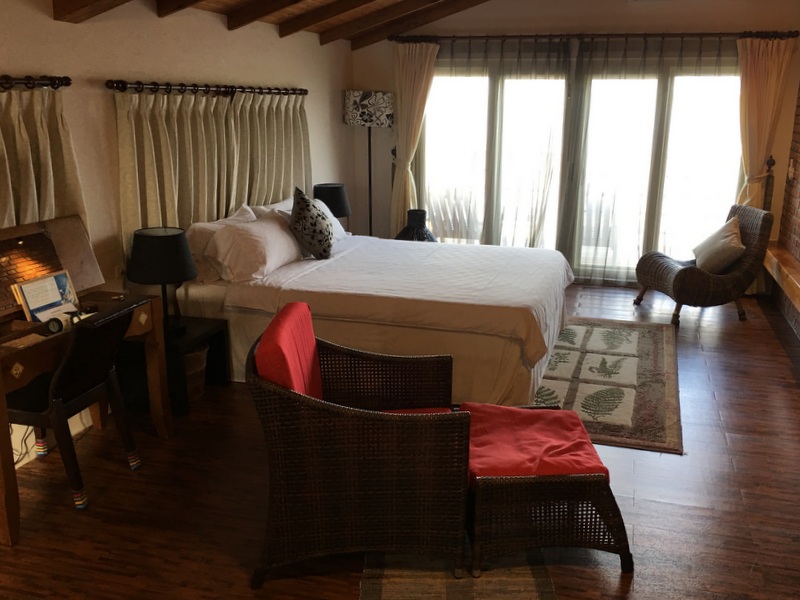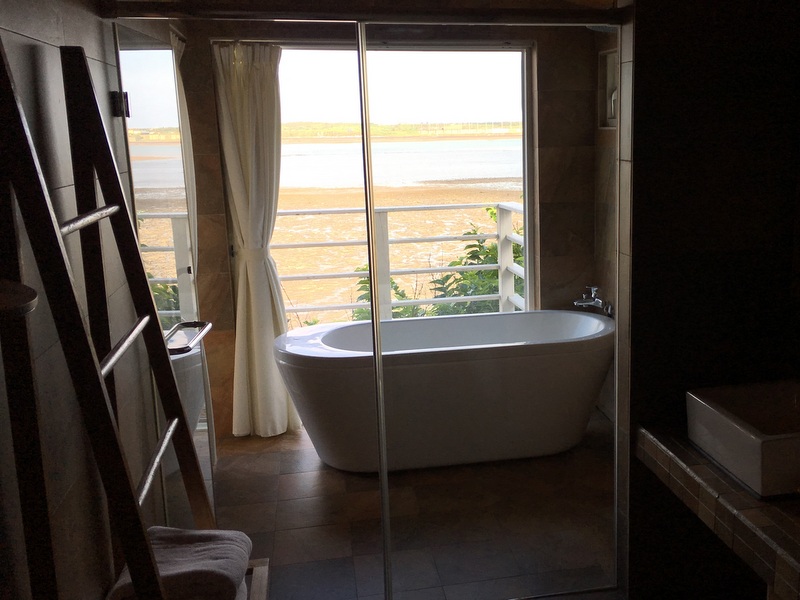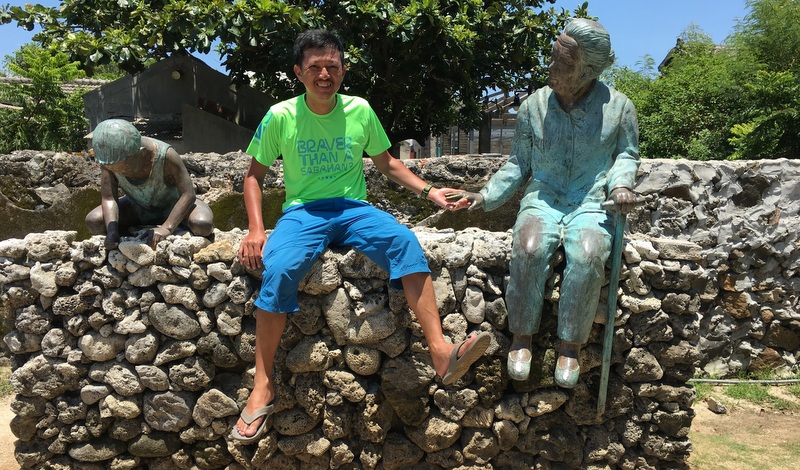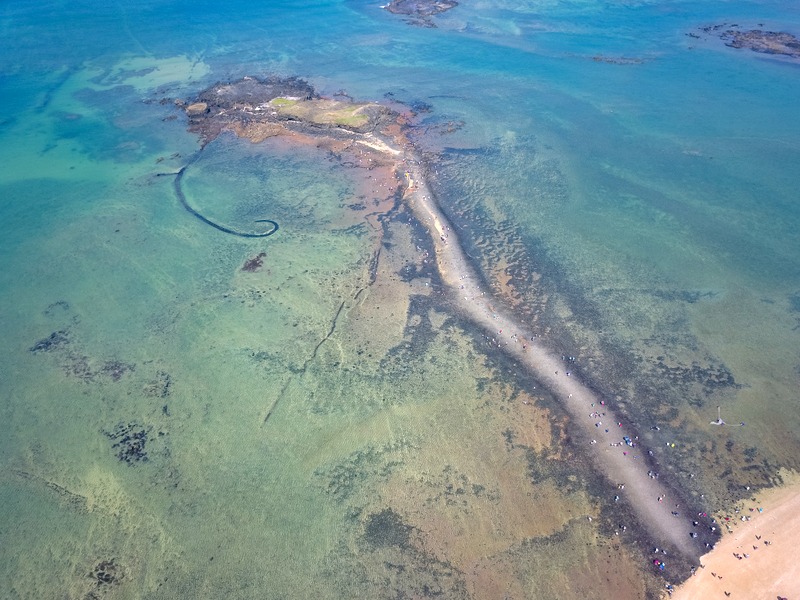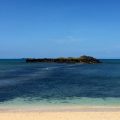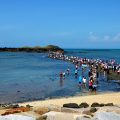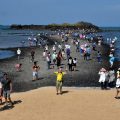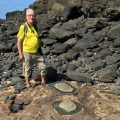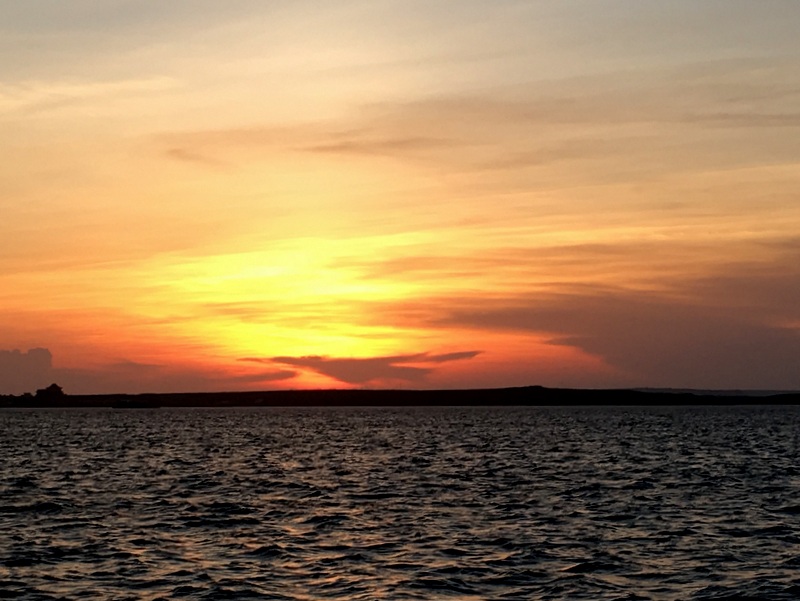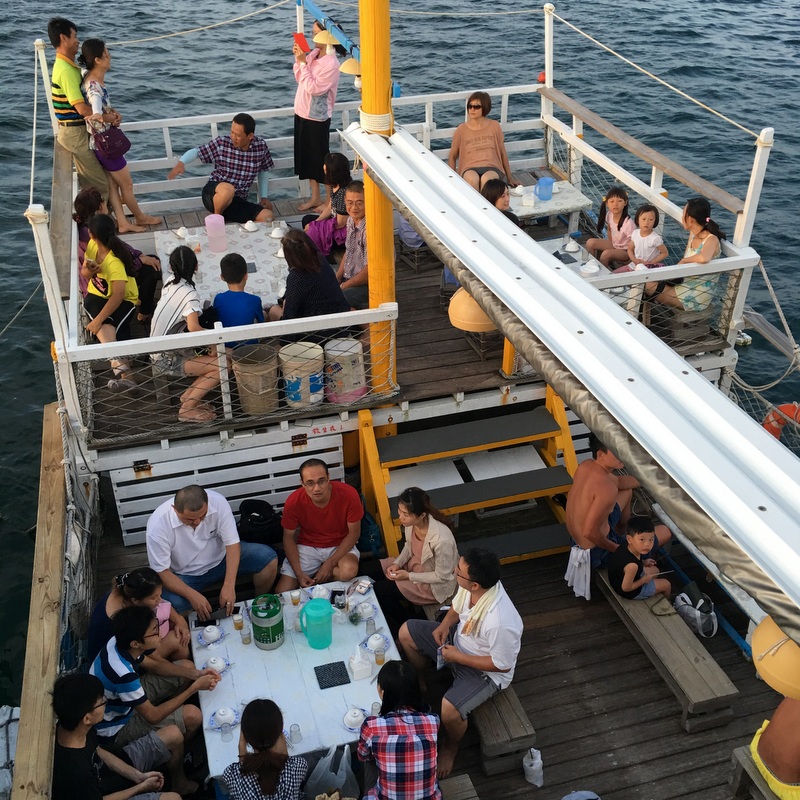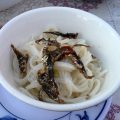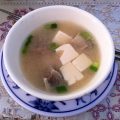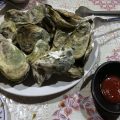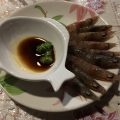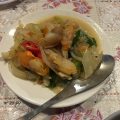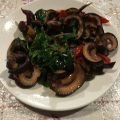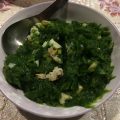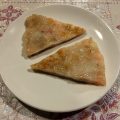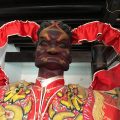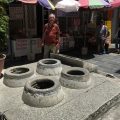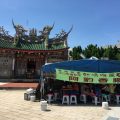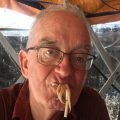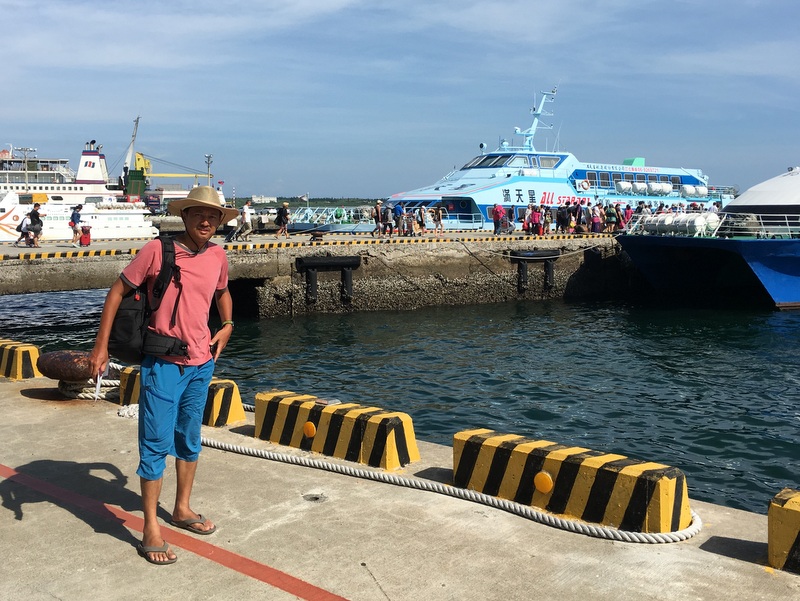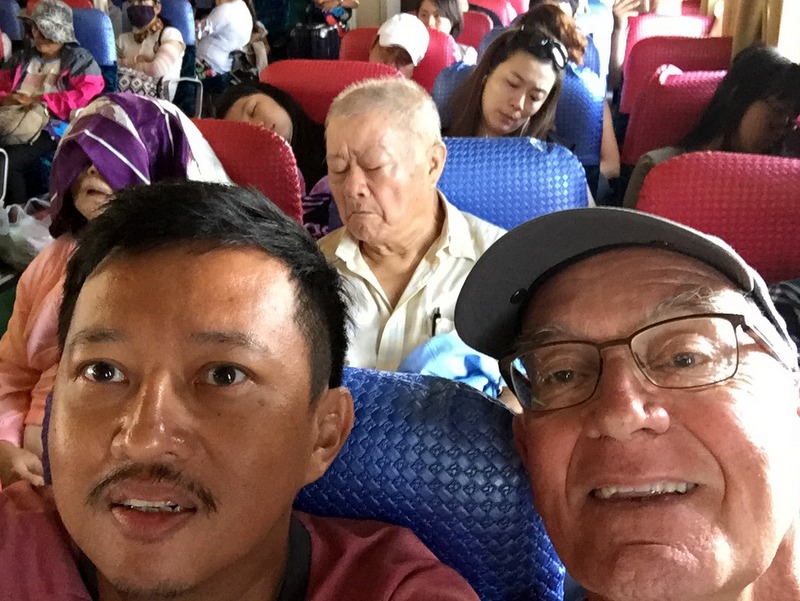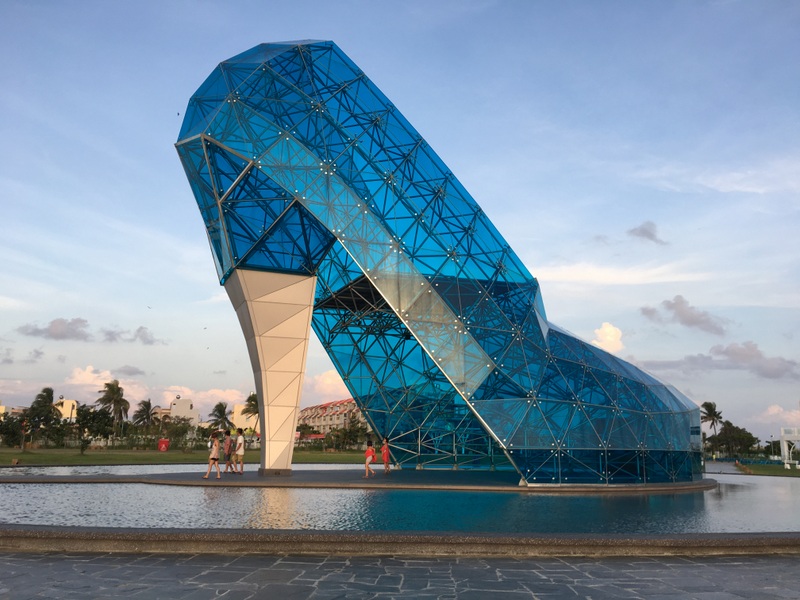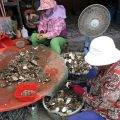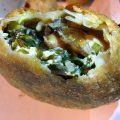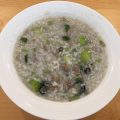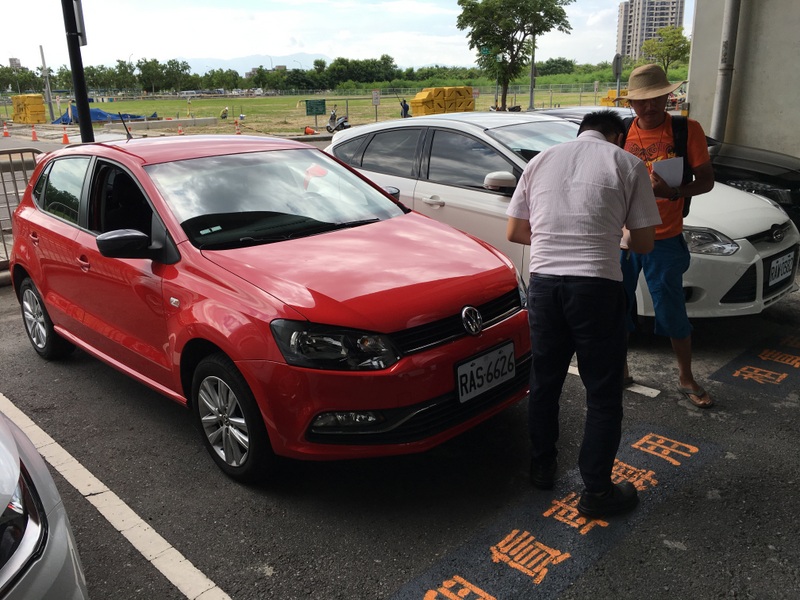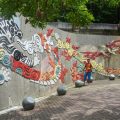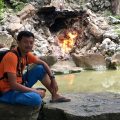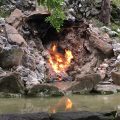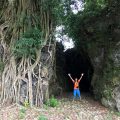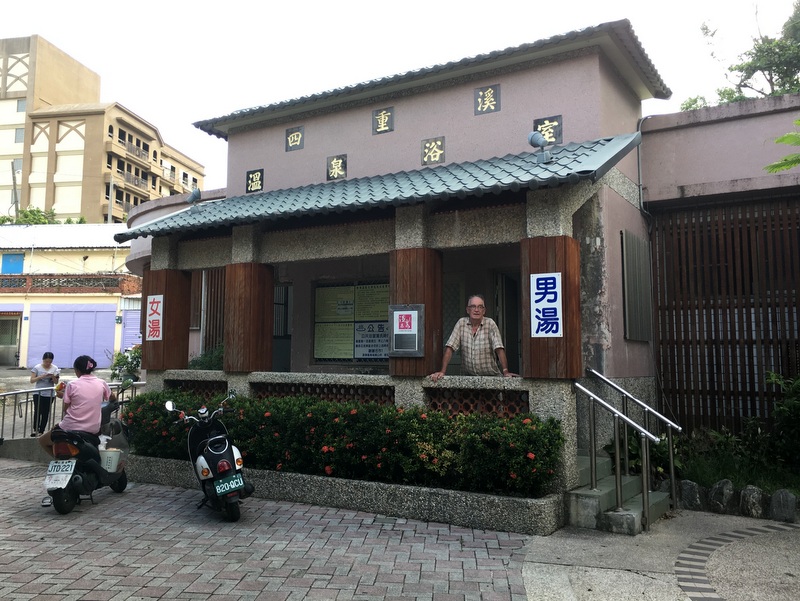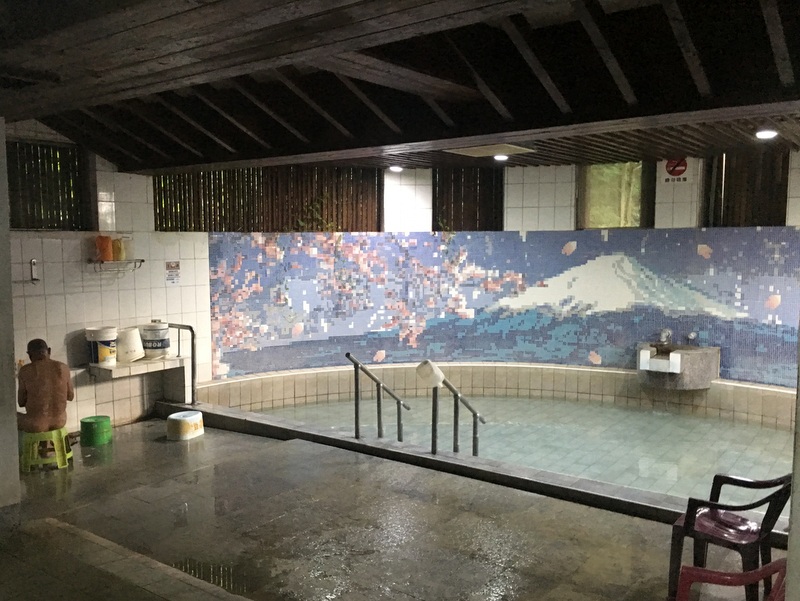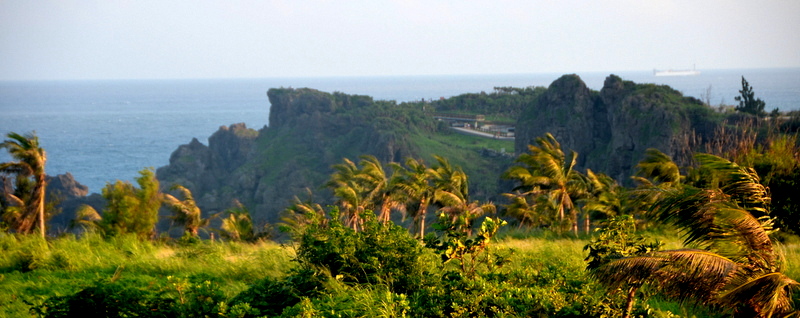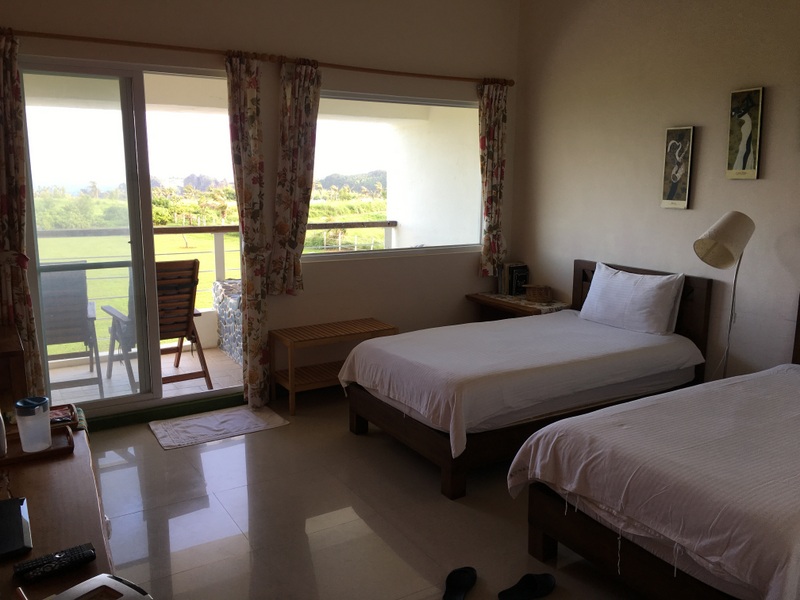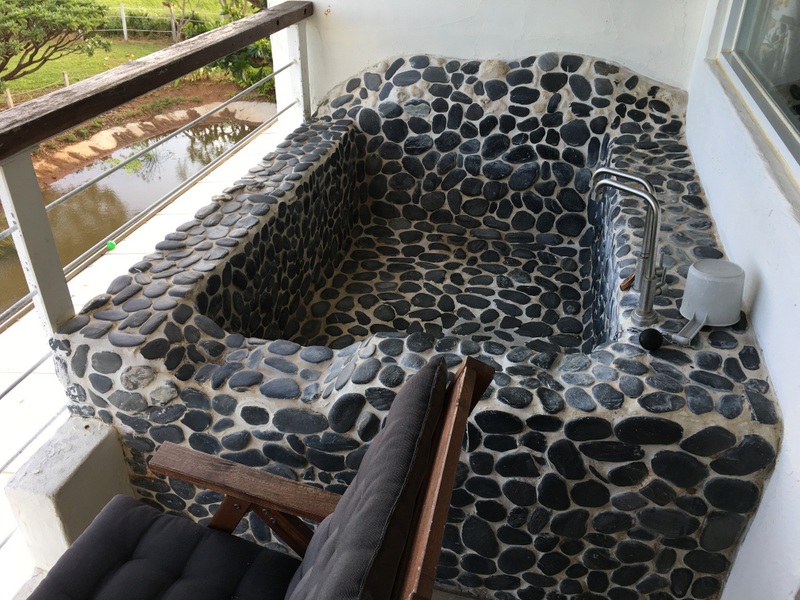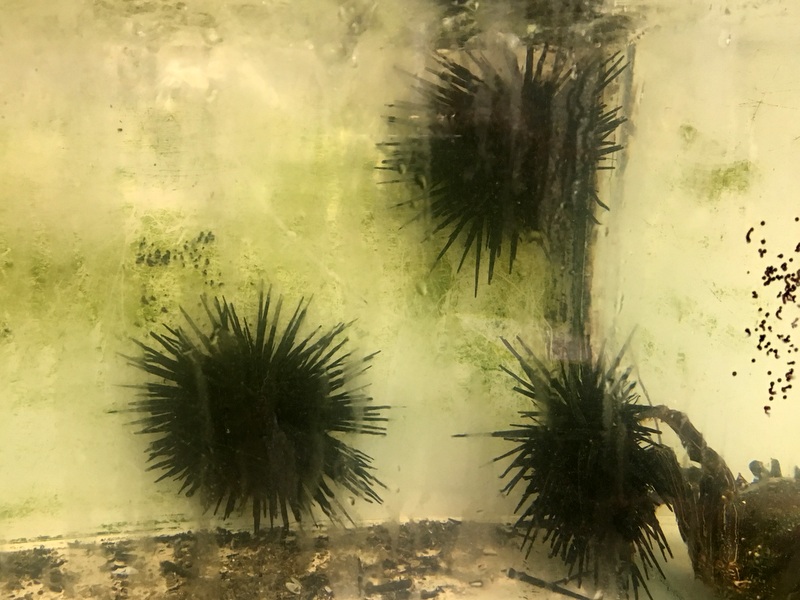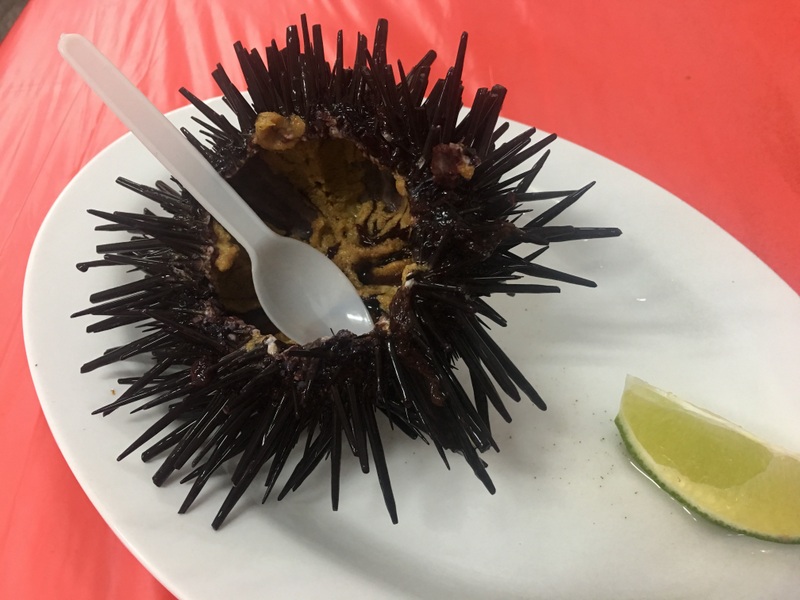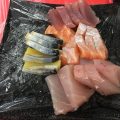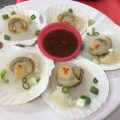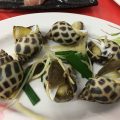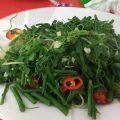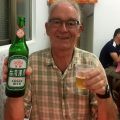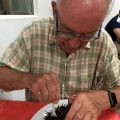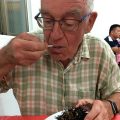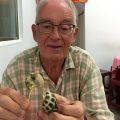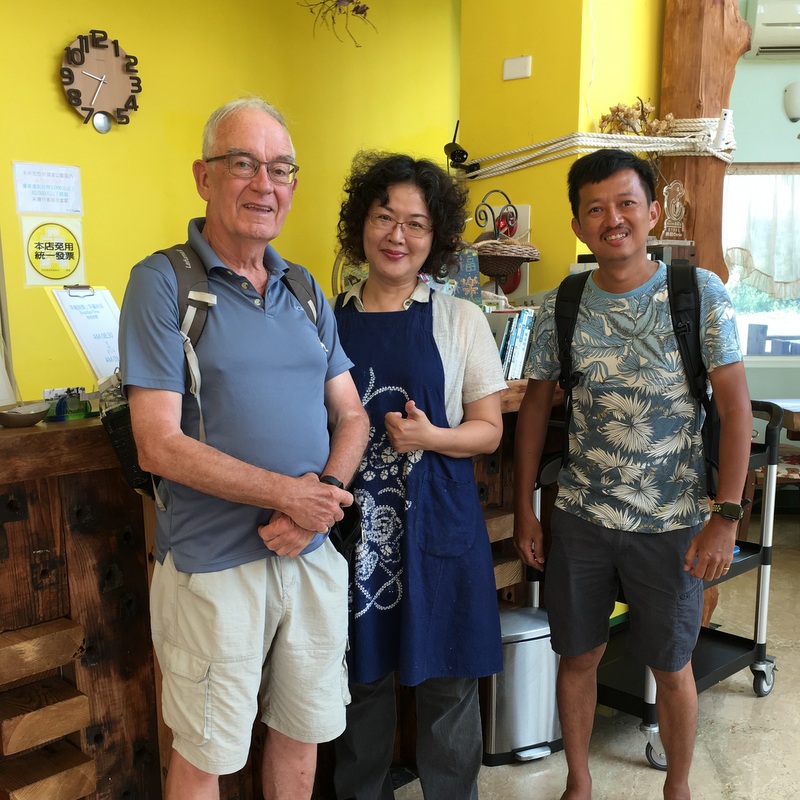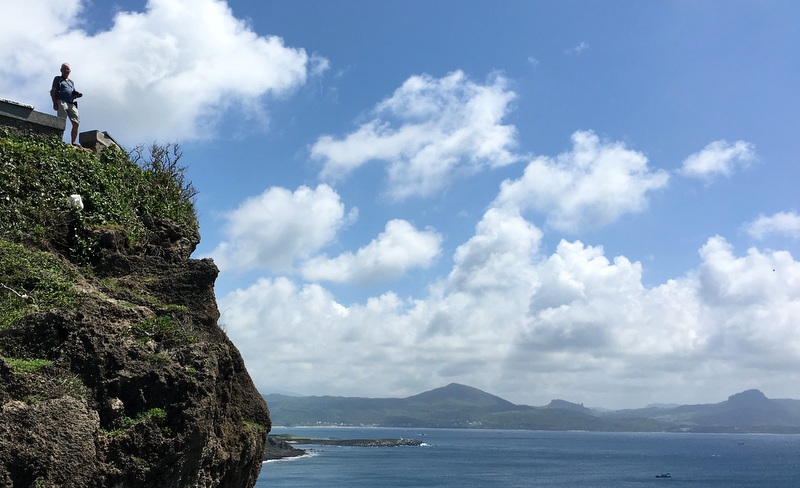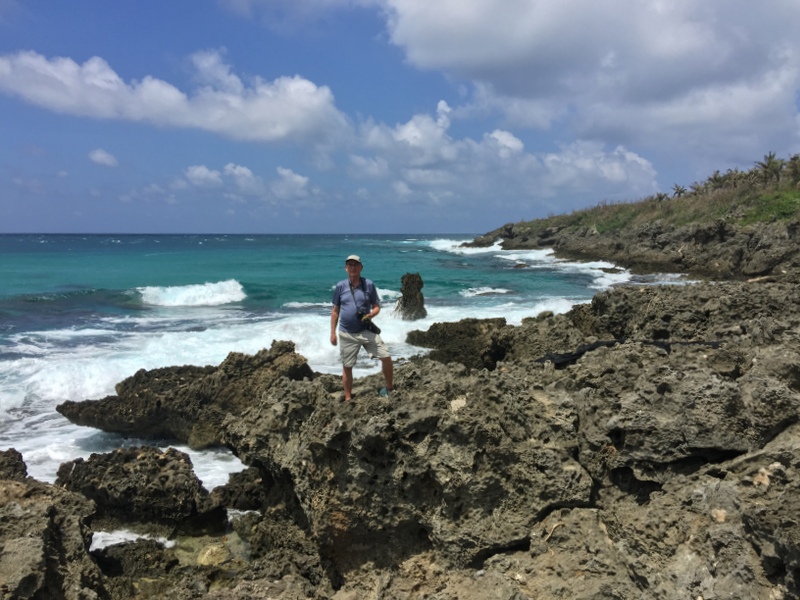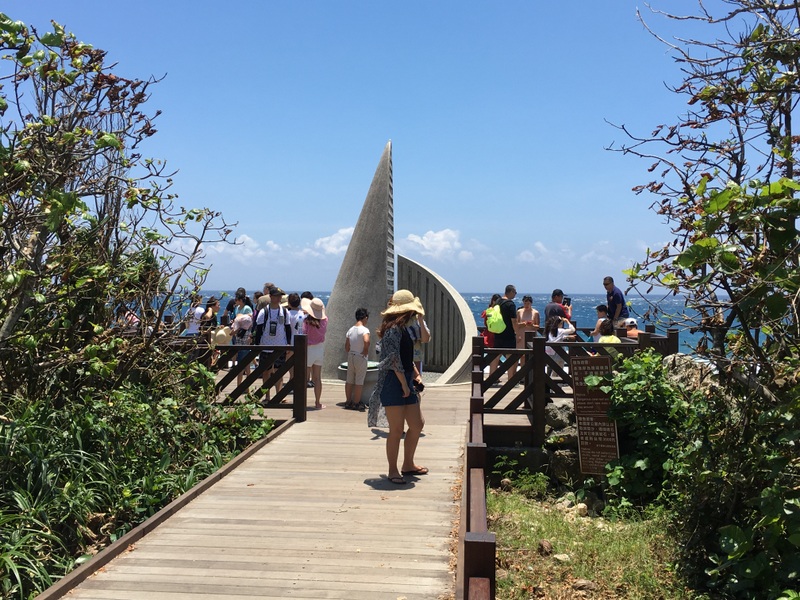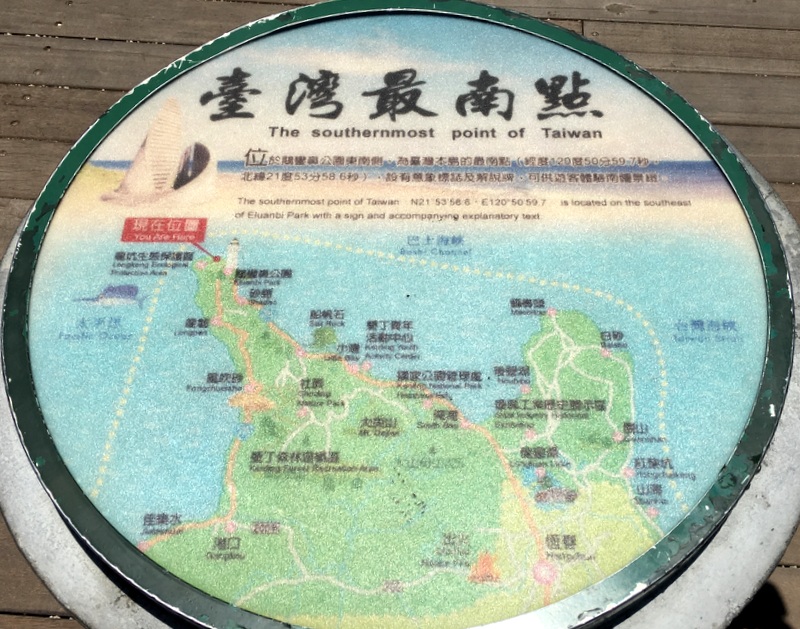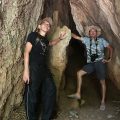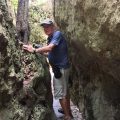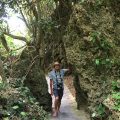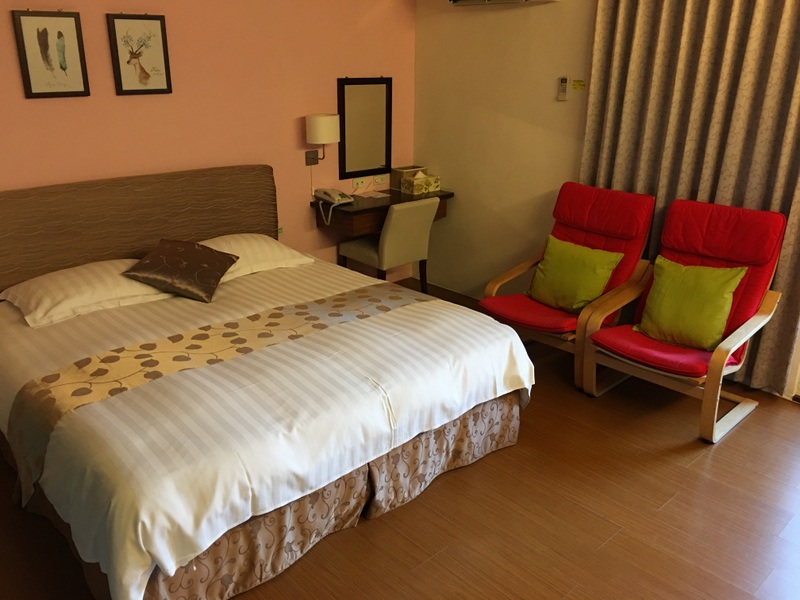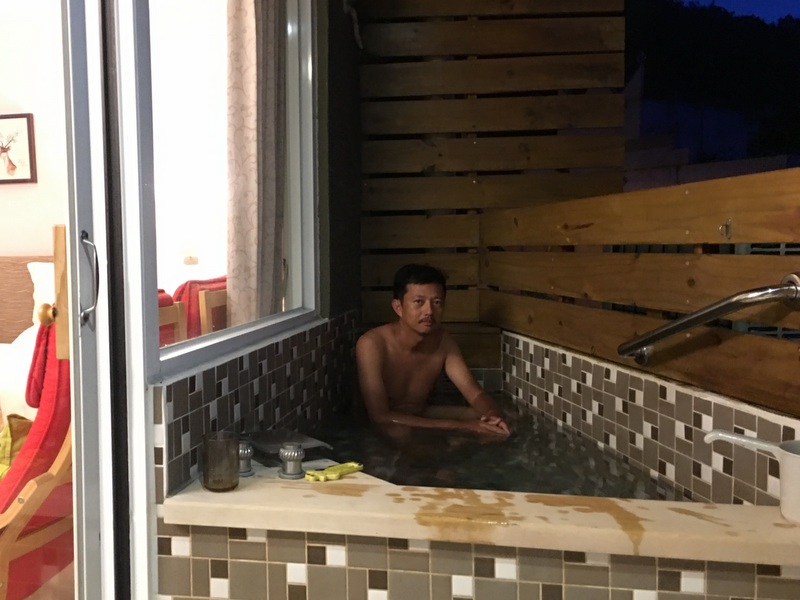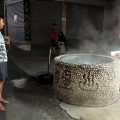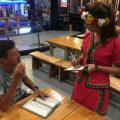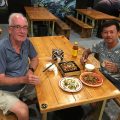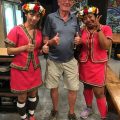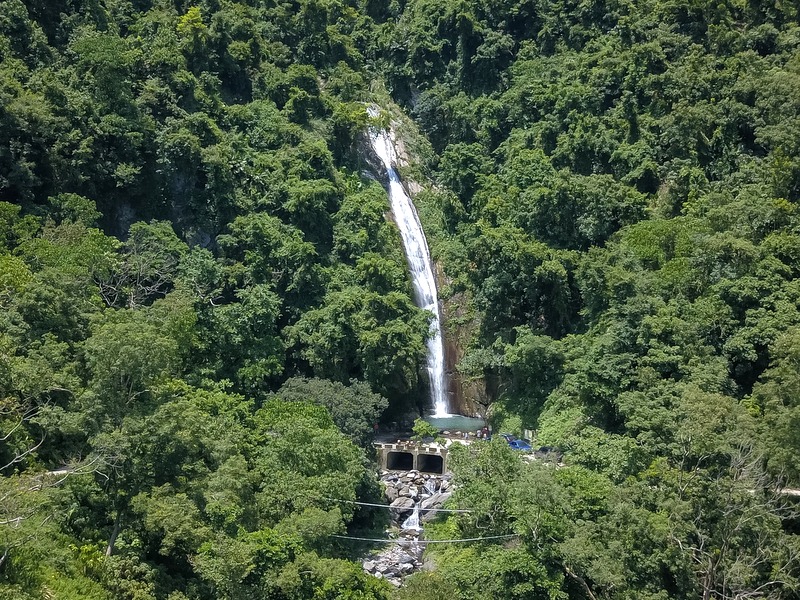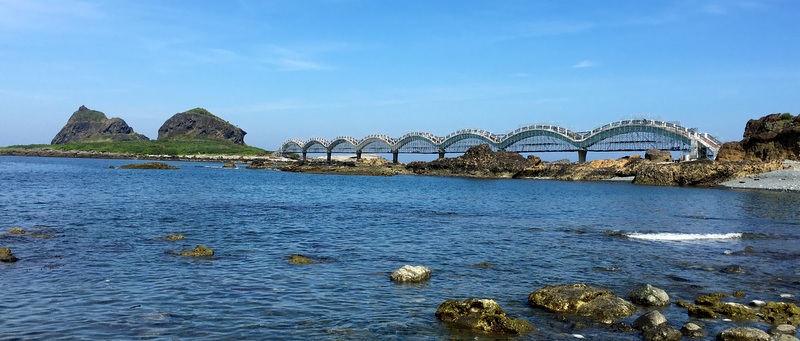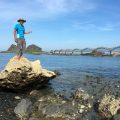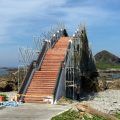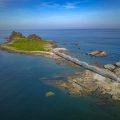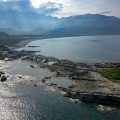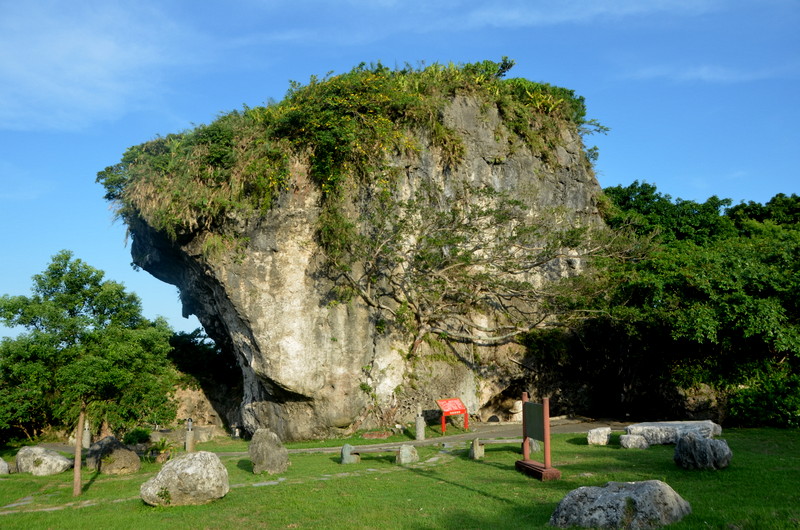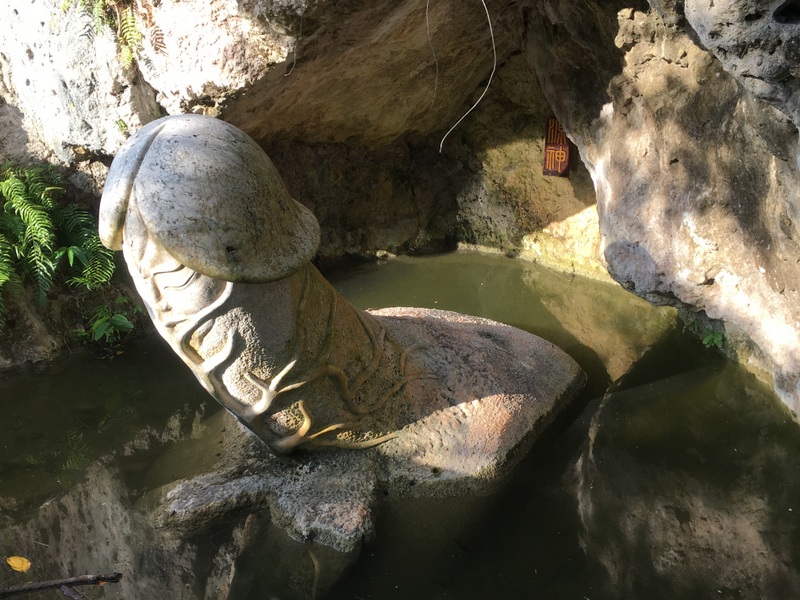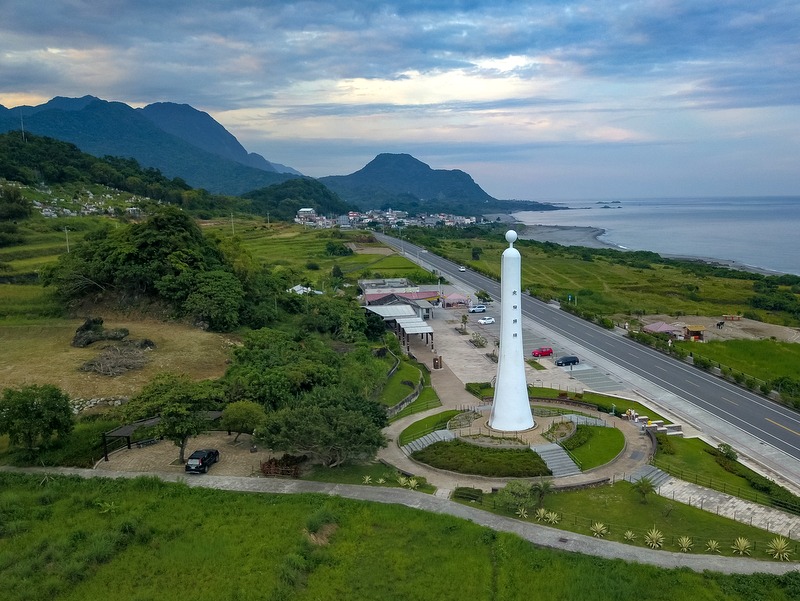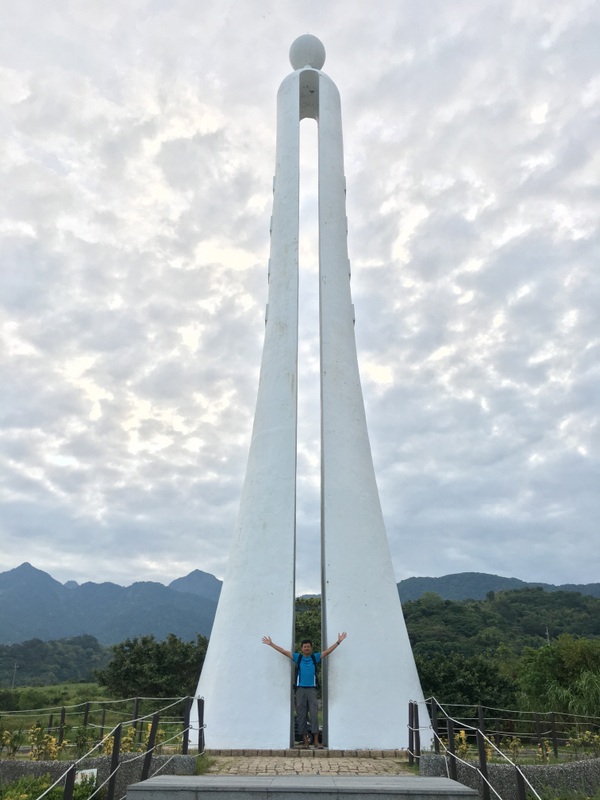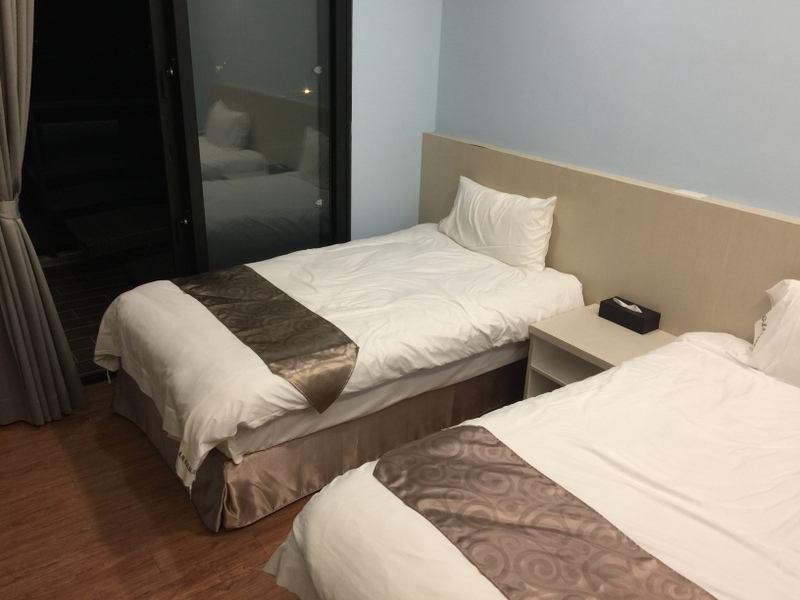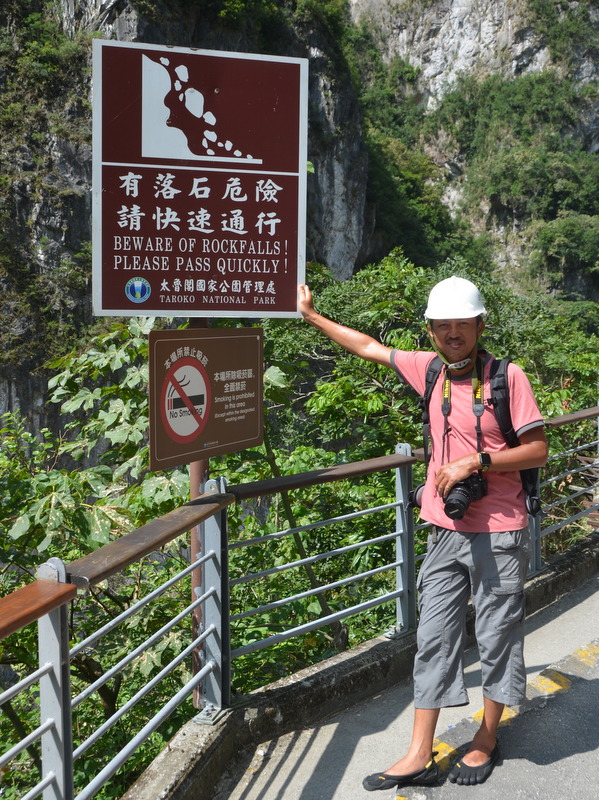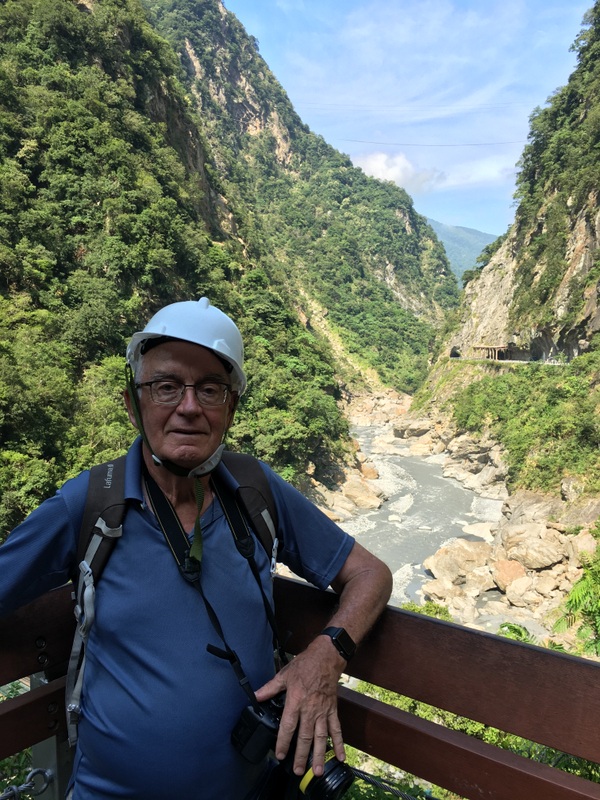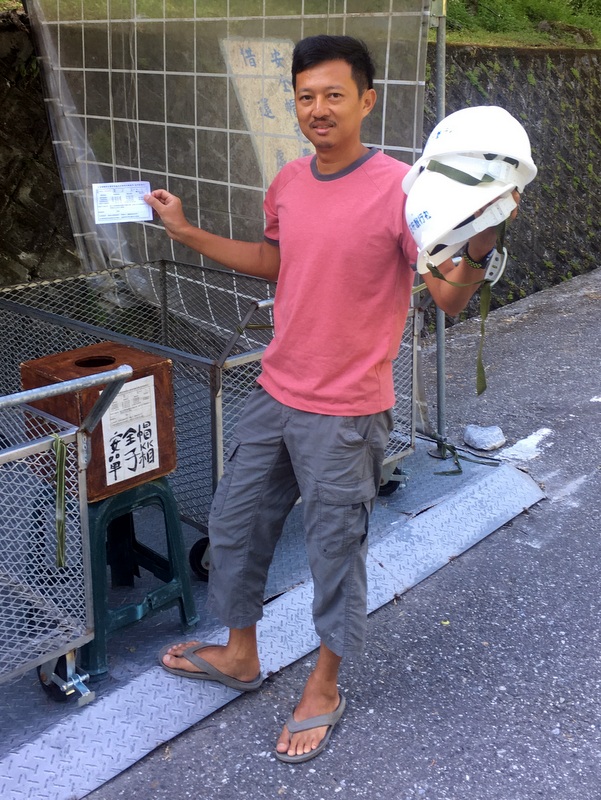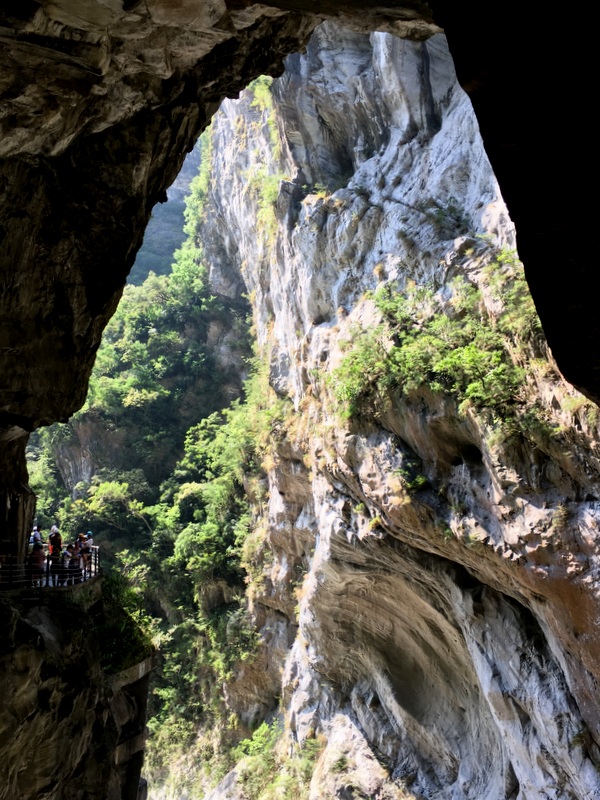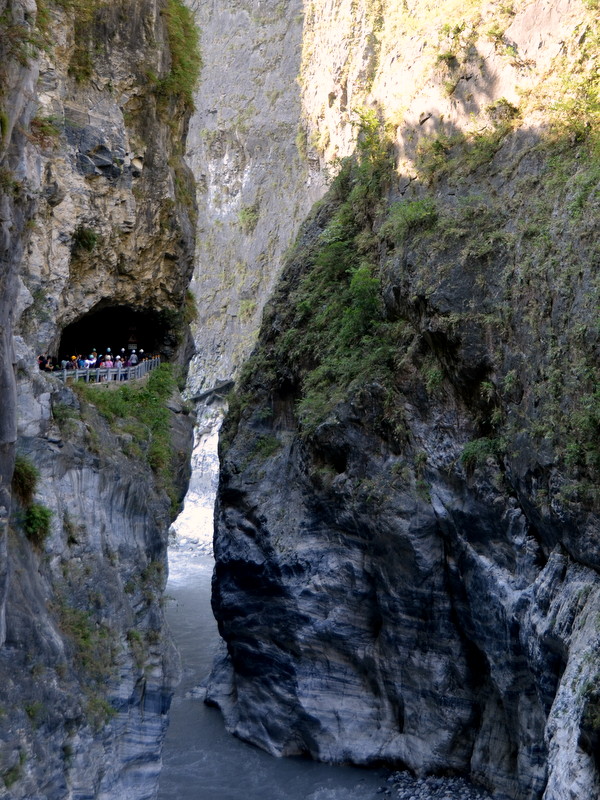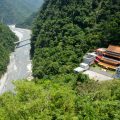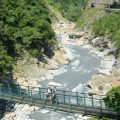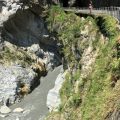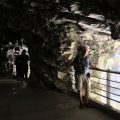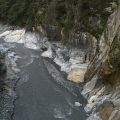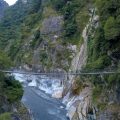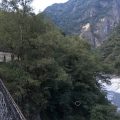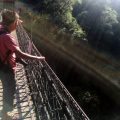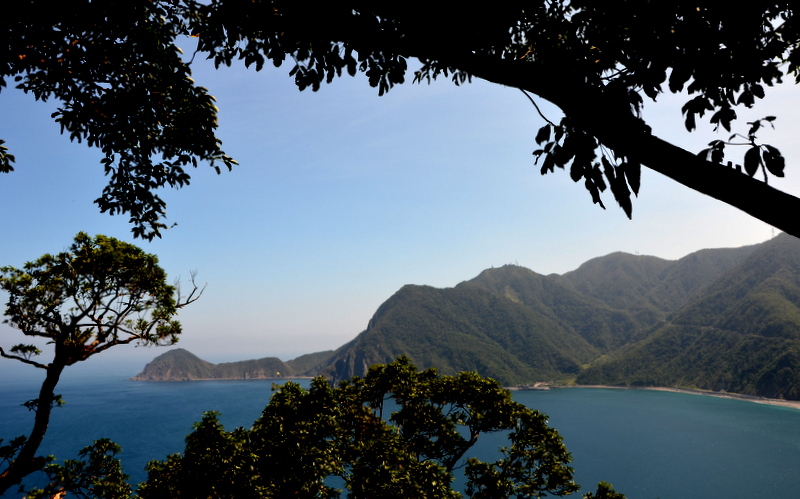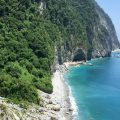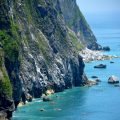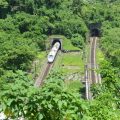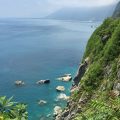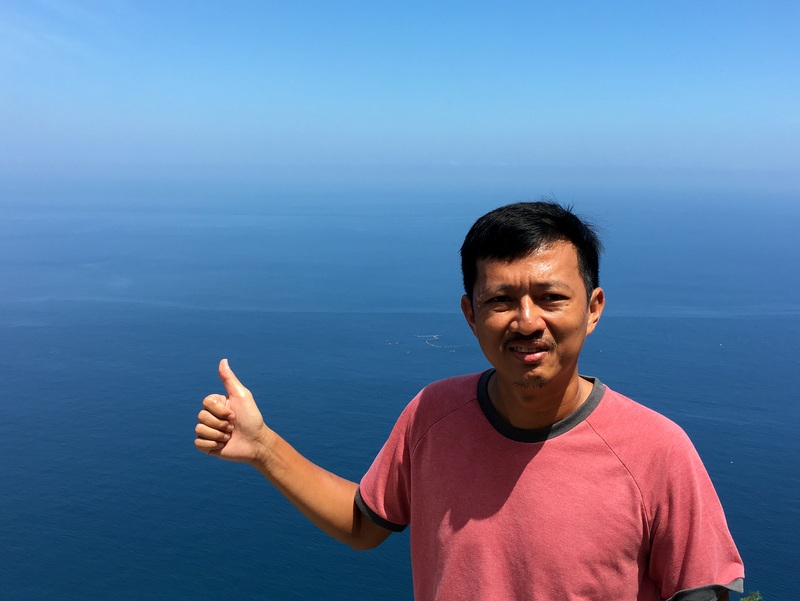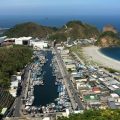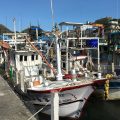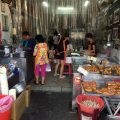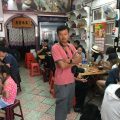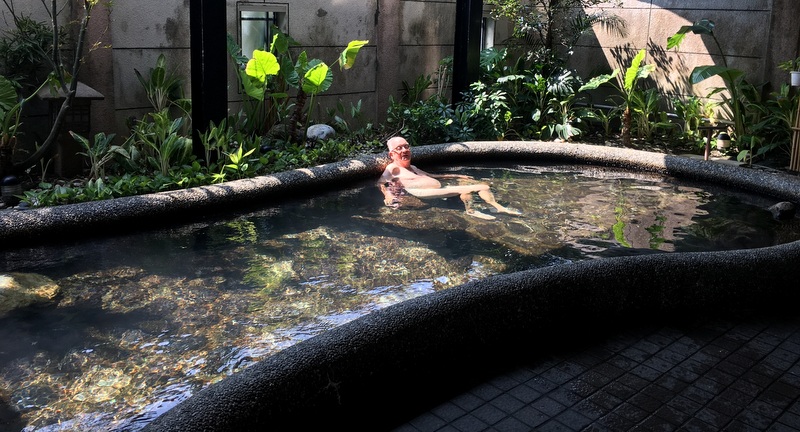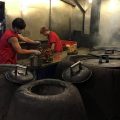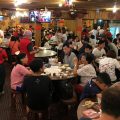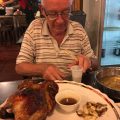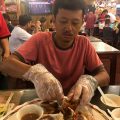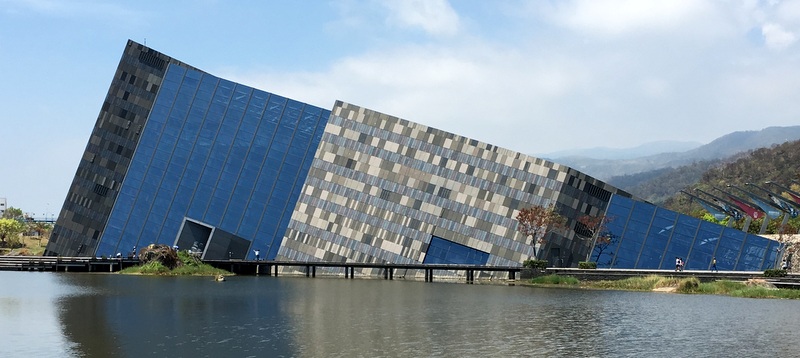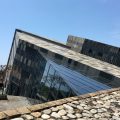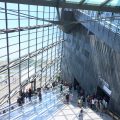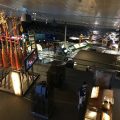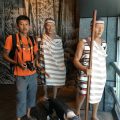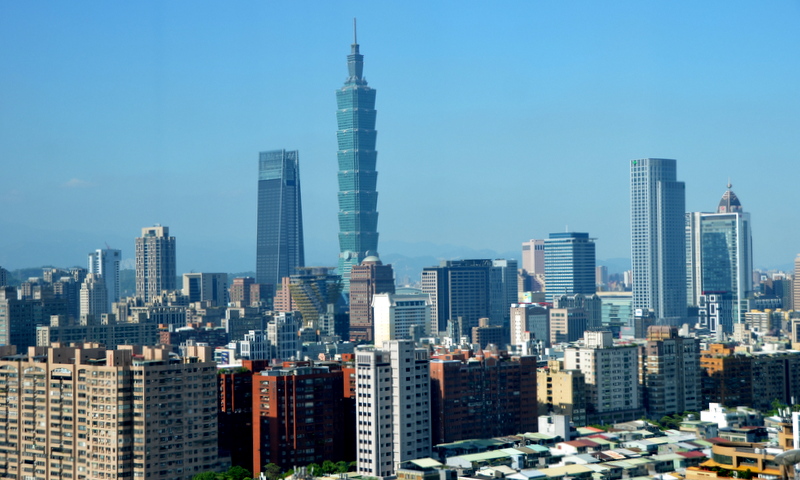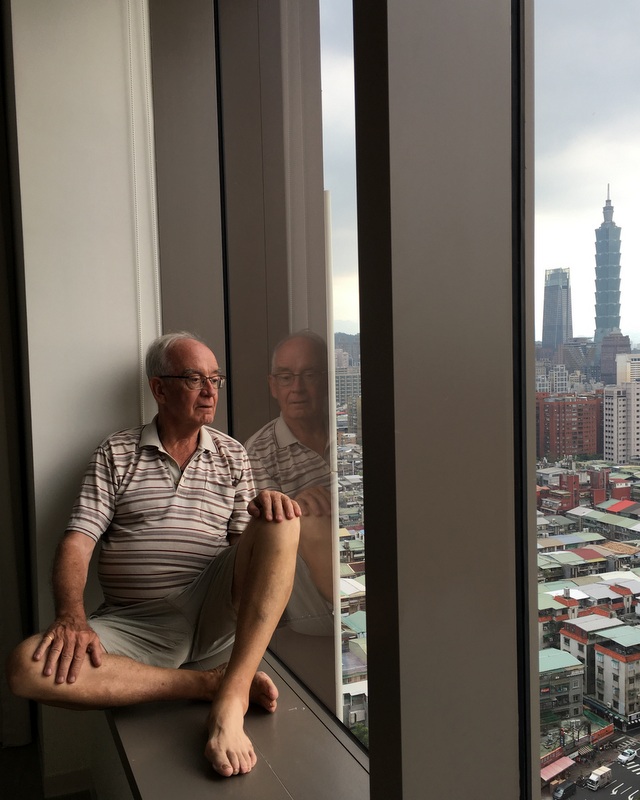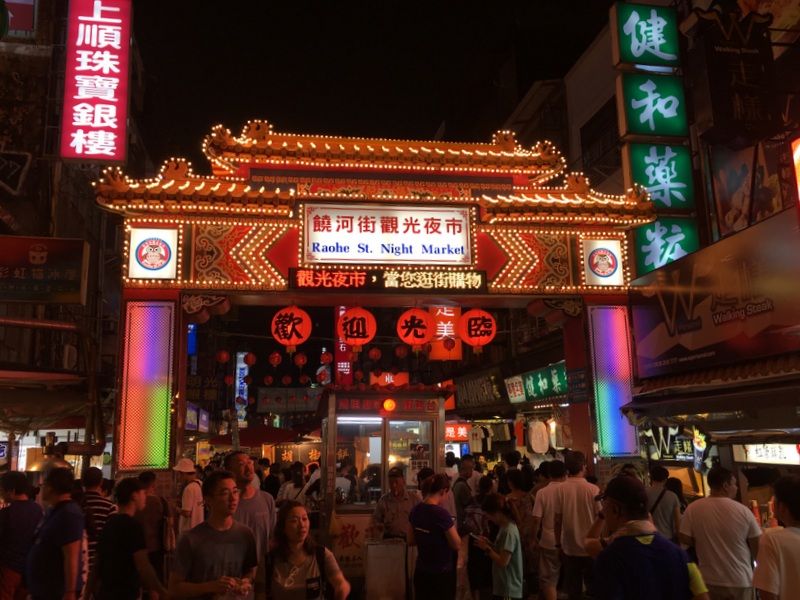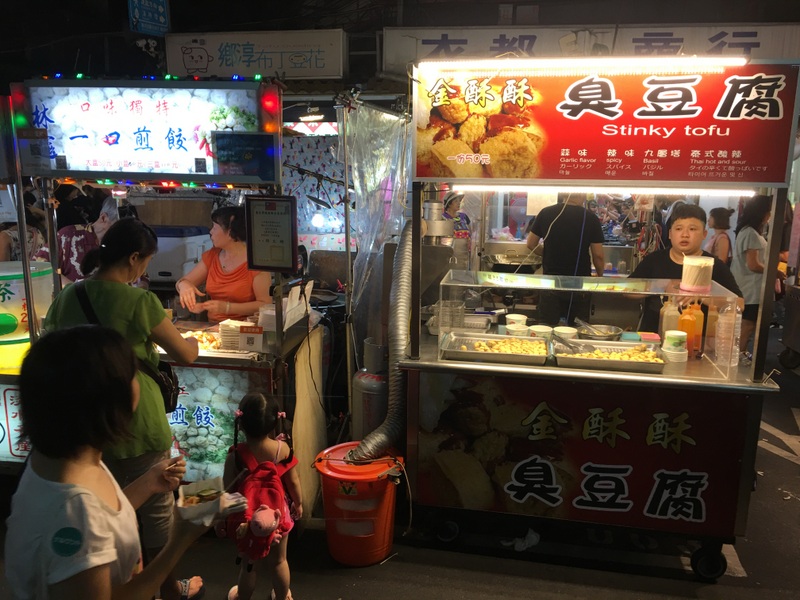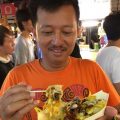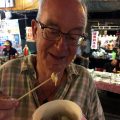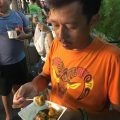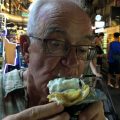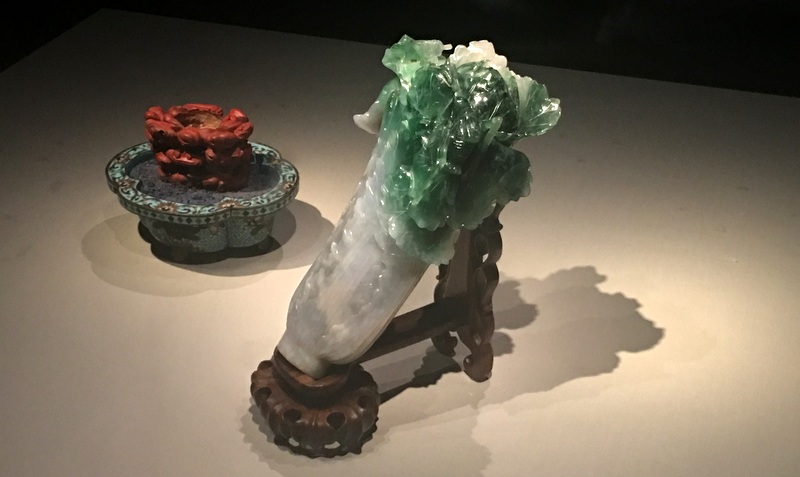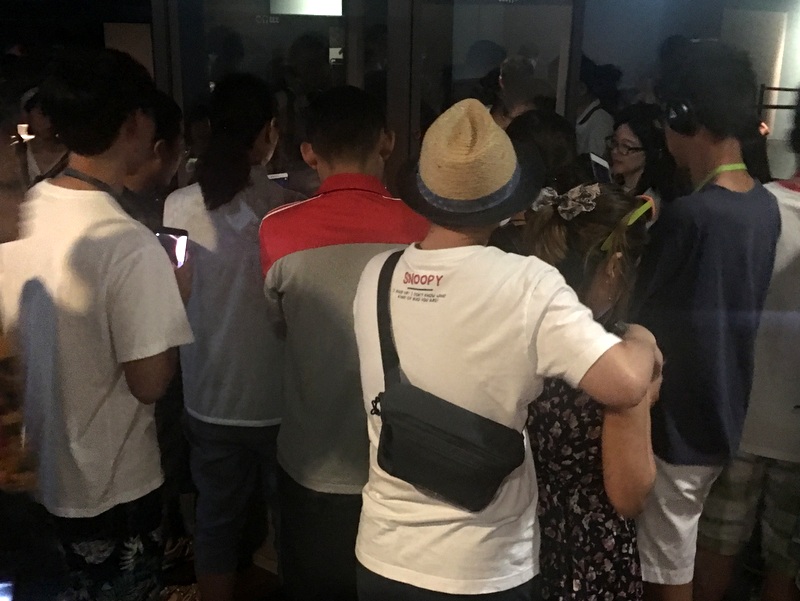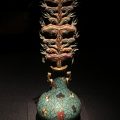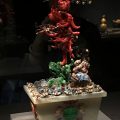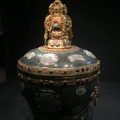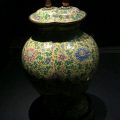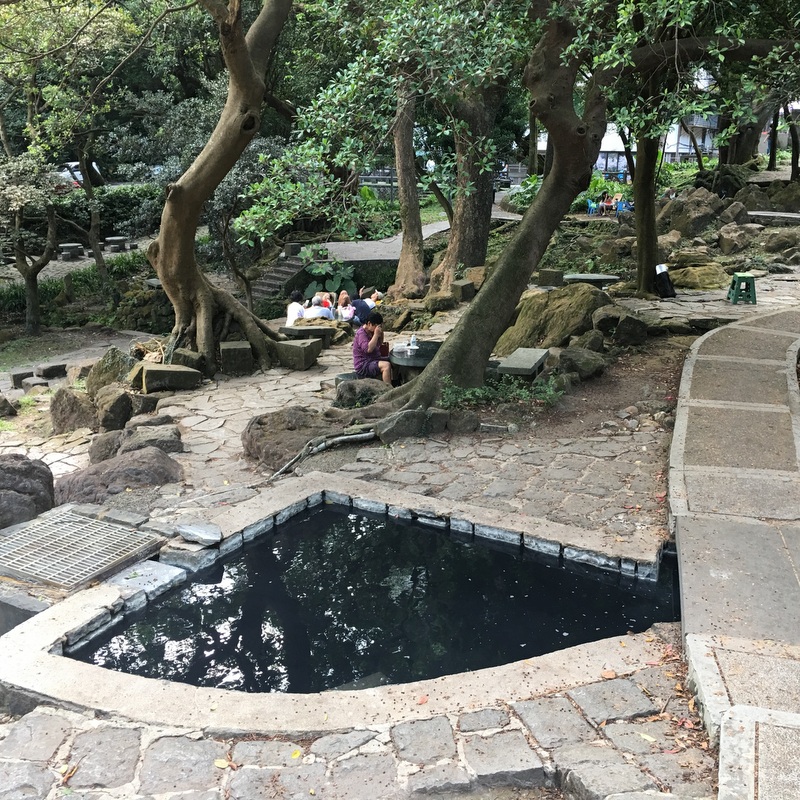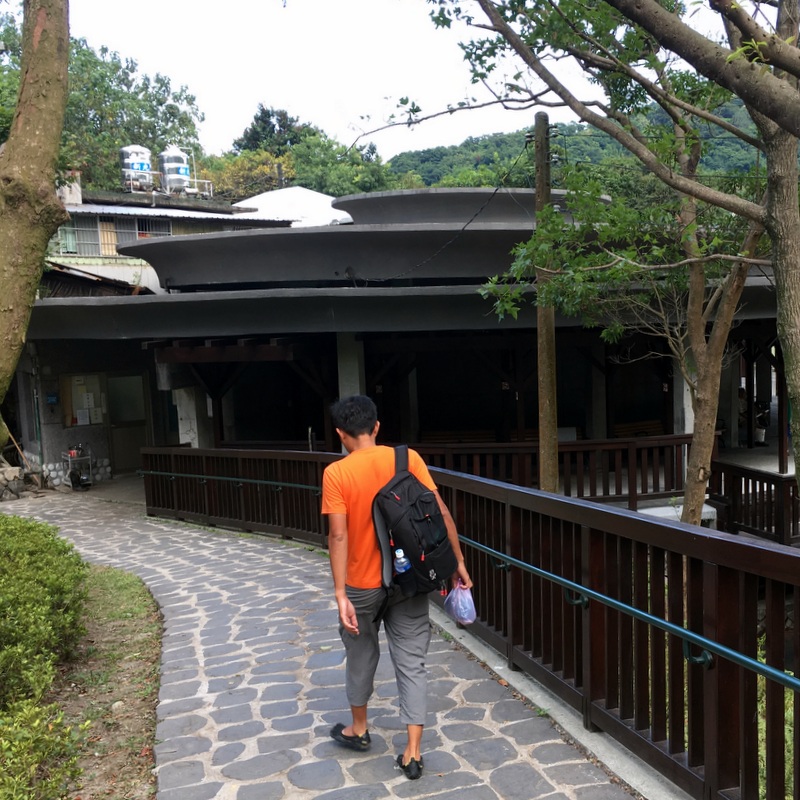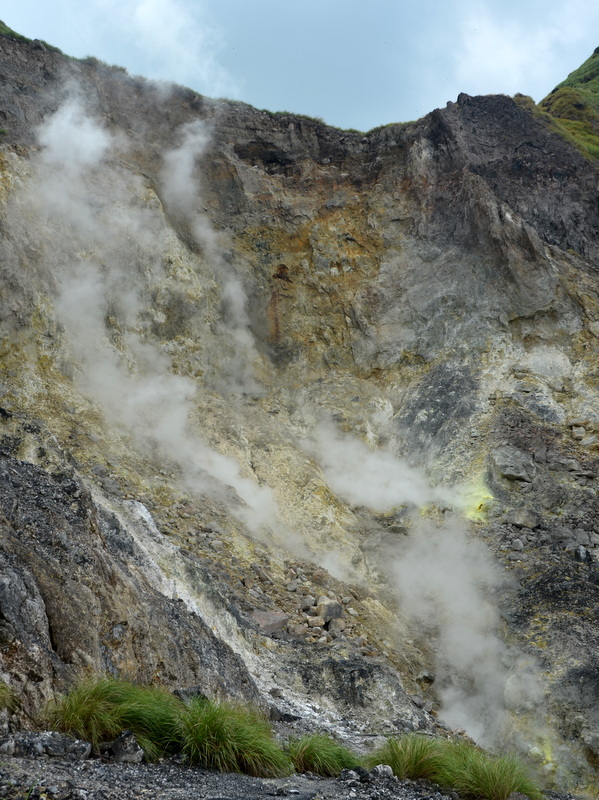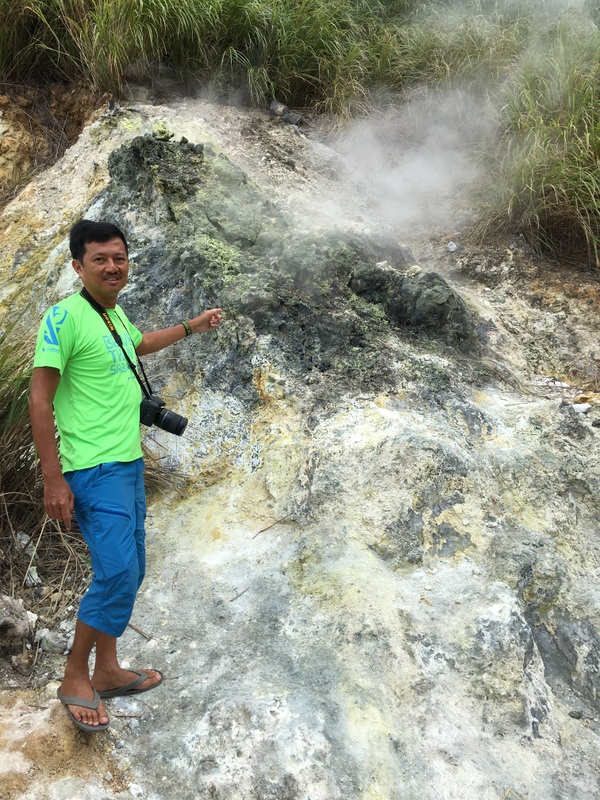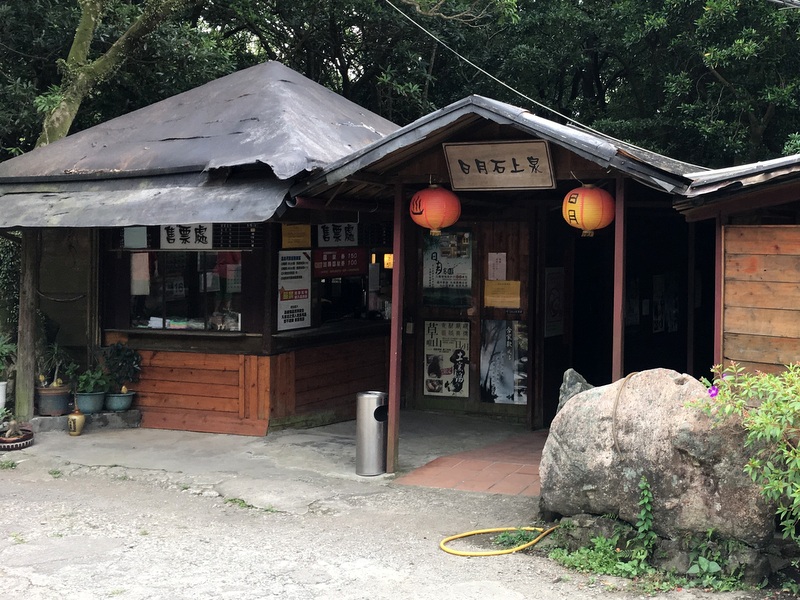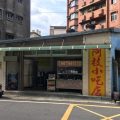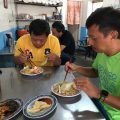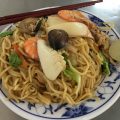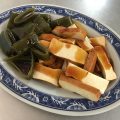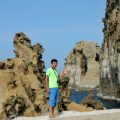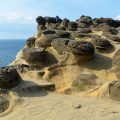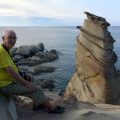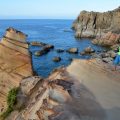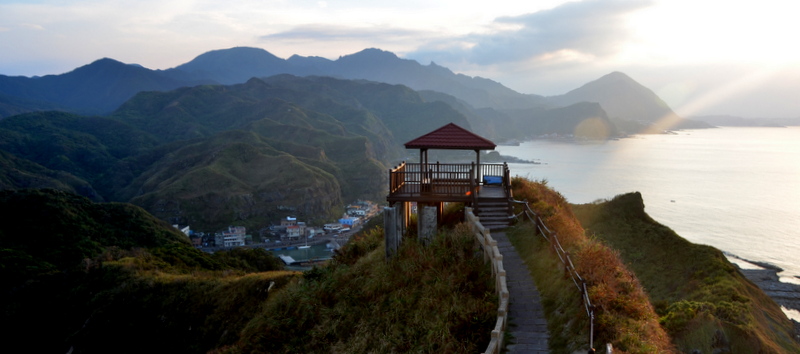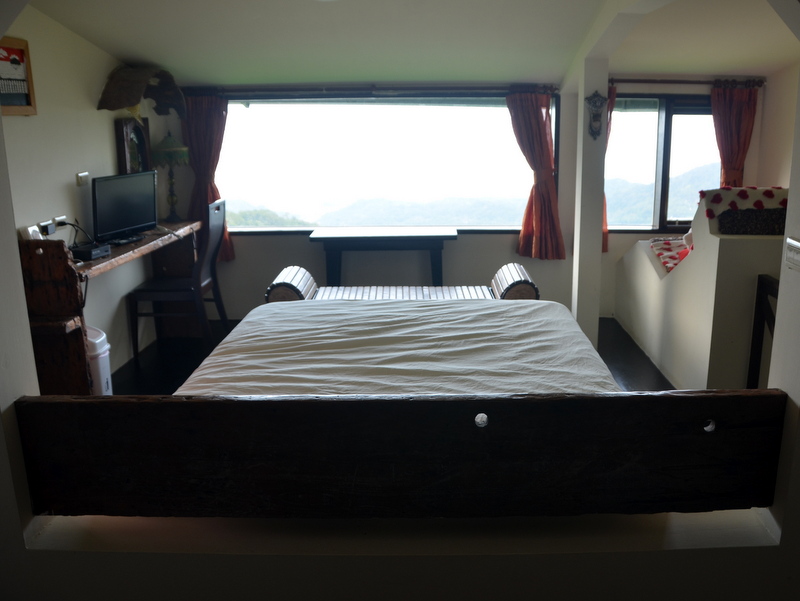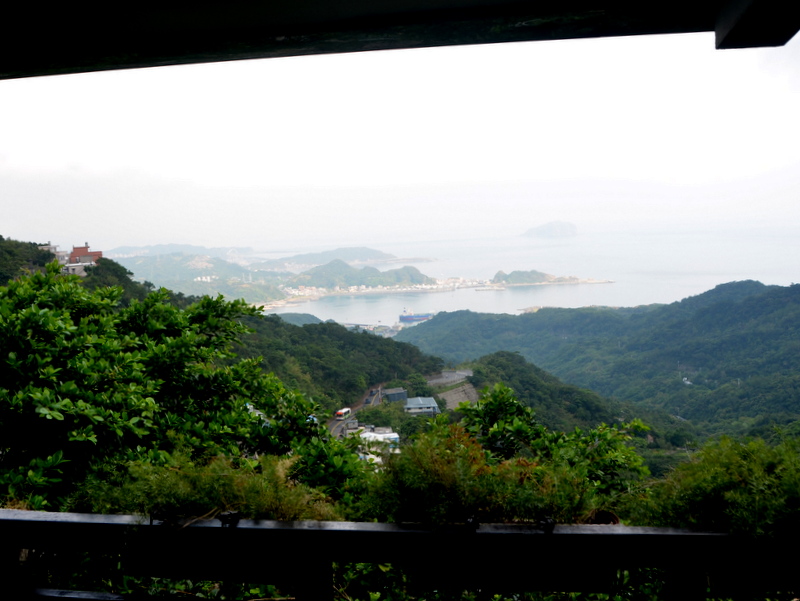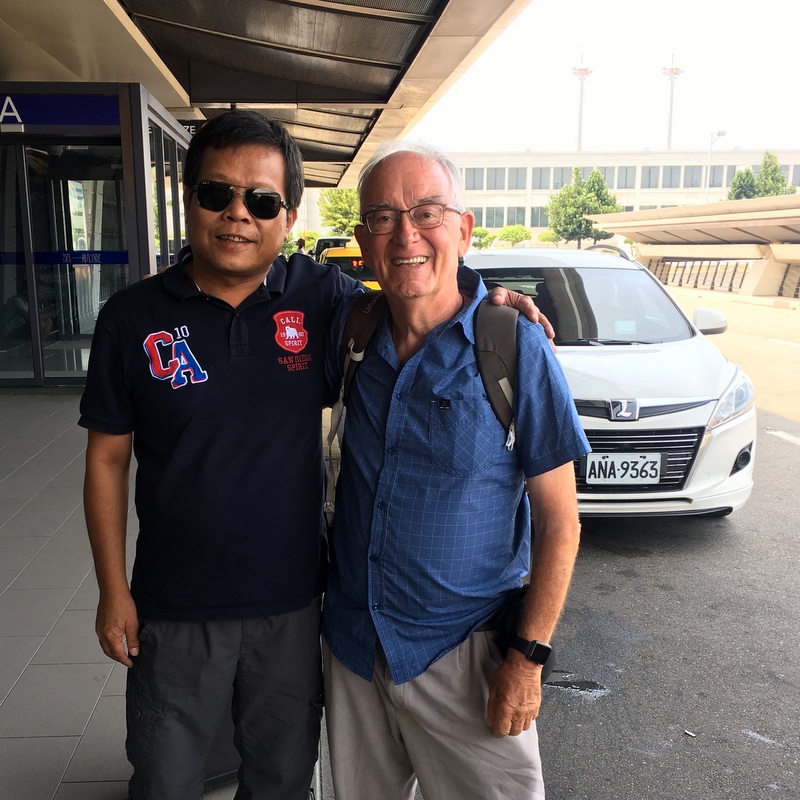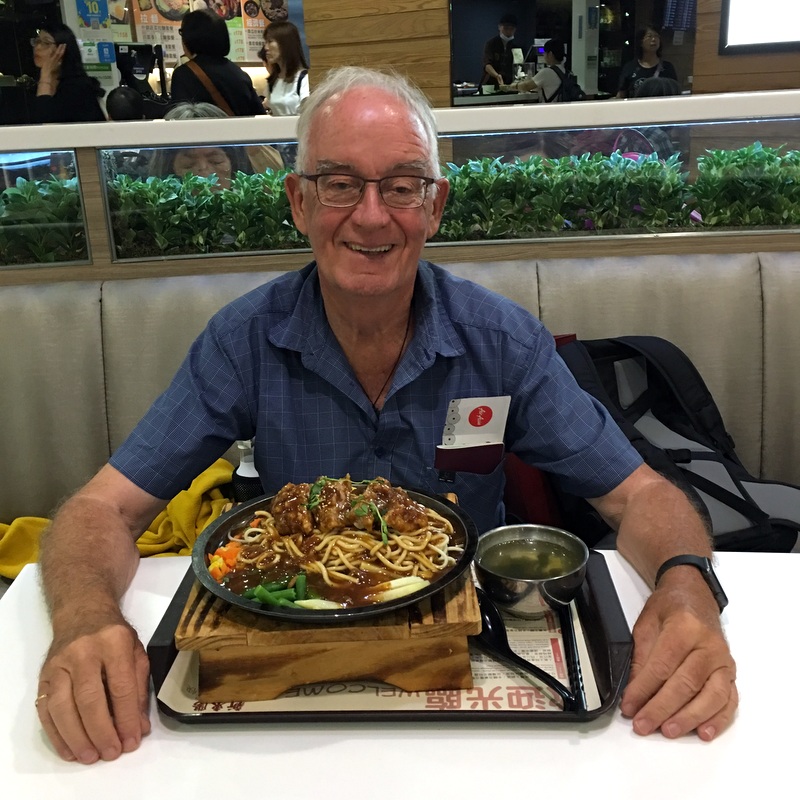We like Taiwan. Our first trip to Taiwan was in 2014, Aric went again in 2015 with his family. Both times to the Northern part of Taiwan.
This time we first visited the Penghu islands, off Taiwan’s West Coast.
Back on the mainland we rented a car to travel to the southernmost point of Taiwan and from there, following the East Coast, we drove back to Taipei.
In the GE map I have indicated the locations where we have spent one or more nights
It was an amazing trip, full of variety
I took (too) many pictures, in this report I will just give an impression of what we have been doing. Nevertheless it will be a long report…:-)
On 1 August we took an Air Asia flight to Kaohsiung, a big town in south-western Taiwan. A few days earlier Taiwan had been struck by typhoon Nesat, followed by tropical storm Haitang. Nesat had cause considerable damage, many flights were cancelled, so we were a bit concerned, but we arrived without problems, although it still was raining heavily.
This is the spectacular accommodation Aric had booked in Kaohsiung
A studio on the 33th floor of the 85 Sky Tower. A room with a view, where we stayed two nights. Here is the view from our room (taken later when the rain had stopped).
Our first Taiwanese dinner. Many people in spite of the rain. We shared a table (and a conversation) with a Taiwanese family. The first experience of Taiwanese friendliness, many more would follow..
We had only one day to explore Kaohsiung. The day we arrived, we could not do much because of the rain, but the next day we only had some drizzle.
In the morning we visited the harbour, the lighthouse and the old military fort
- Our “homestay”
- Traditional houses
- The lighthouse
- The Kaohsiung fort
The most famous tourist attractions of Kaohsiung are the Dragon and Tiger Pagodas. They were built in 1976 in the Lotus Lake and can be reached by a zigzag bridge.
- The zigzag bridge
- Reflection in the lake
- Aric is a dragon himself
- Not afraid of tigers
Kaohsiung is a big town, we used the metro often. One of the main stations is Formosa Boulevard, where we admired the Dome of Light, 30 meters in diameter and made of 4,500 glass panels.The largest work of glass art in the world.
The next day we went back to the airport to take a flight to Qimei, one of the Penghu islands. Nice experience to fly in a Twin Otter (19 pax). It took only 40 minutes to reach Qimei.
At the airport, our host was already waiting for us, with the motorbike Aric had rented for the next two days. He took us to Cheng Village, a collection of traditional (renovated) Penghu houses. Our room was in one of them, but as there were no other customers, we had the whole house to ourself.
A splendid accommodation. Aric had brought his drone, the right picture shows an aerial view of the Cheng Village. Click to enlarge and you can spot us in the courtyard of our “mansion”
When we started talking about another trip to Taiwan, Aric was adamant that he wanted to visit the Penghu islands. What is so special about these islands, was my question. The Twin Hearts of Qimei, he replied.
Here they are. It is actually an ancient fish trap made by stacking stones to form a trap that resembles a flying heart. The main tourist attraction of Qimei, every day many hundreds of tourists arrive by ferry from the main Penghu island. After they have left, it becomes quiet, when we visited the place in the evening no one else was there. Very peaceful and romantic.
Aric used the drone to take a spectacular sunset picture of the Twin Hearts. The other drone photo has been taken the next day. It shows another tourist destination of Qimei: little Taiwan. With some fantasy the rocky platform looks like Taiwan.
The island itself is not very interesting, rather flat and barren. But the rocky coastline is quite attractive
- The dragon..
- and the Tiger
And then there is the food, seafood of course. Exotic seafood often…:-) It was our first experience with Sea Urchins. You eat only the gonads (sex organs !) of these spiny critters.
- Squid salad
- Sea Urchin sashimi
- Mini squids
- Sea Snails
On our way back from the restaurant to our homestay, we found a few beautiful flowers just beside the road. We were quite excited, but discovered later that this night-blooming cactus is quite common, actually related to the dragonfruit !
After two nights on Qimei, we took a ferry to Magong, the main town of the Penghu archipelago. Several of the islands are connected by bridges, Aric had booked homestays on two of them, and rented again a motorbike.
On arrival at the Magong jetty, the owner of the first homestay was already waiting for us. He drove us to his place where we dropped our suitcases and continued on the motorbike to the second homestay.
It looked complicated but it worked very well. Again the people are so friendly!
- Our boat in Qimei
- On our way
- Car waiting for us
- Our motorbike
It was still quite some distance to the homestay on Xiyu island. An isolated house in the middle of nowhere. The friendly lady was living downstairs, the first floor was ours, as there were no other guests.
From our terrace we had a wide view of the surroundings and of course Aric used the drone to take an aerial picture
Soon after arrival we went out again to visit the basalt cliffs of Xiyu. Really spectacular.
We continued to the Yuwengdao lighthouse to watch the sunset.
The next day, after a traditional breakfast of oyster noodles, we first visited the Xiyu Western Fort, built in 1887. In 1895 it played a role in the Japanese invasion of Formosa, as Taiwan was called in those days. Next we had a look at another basalt formation and the nearby traditional village of Erkan, where we had lunch. Finally we drove back across the Great Bridge of Penghu to the other homestay where we arrived sunburnt and almost dehydrated.
- The Western Fort
- Daguoye basalt cliffs
- Erkan village
- Penghu Great Bridge
This homestay was the most luxurious (and expensive!) of our Taiwan accommodations.
The next day we first visited a memorial for the Taiwanese singer Pan An-Bang in Magong. Aric likes very much one of his songs, which is related to his life as a child on this island. Here is the song 外婆的澎湖湾 on YouTube.
In the afternoon we went to the “Mozes bridge” as we have called it. The official name is Kuibishan Geopark. A small island, Chiyu island, can be reached on foot, but only at low tide. A popular tourist attraction, our homestay had a notice board where the exact times of low and high tide were indicated.
Quite interesting. When we arrived the “road” was not yet visible. A large crowd was was waiting (in the hot sun!) and slowly the passage appeared. Here is a drone image of the “road”.
- Still no way…
- half an hour later!
- I was there!
- On the island
That evening we had a rather adventurous dinner. Aric had kept it secret for me. First we had to ride to a meeting point at a 7-11 shop, where we met the other guests. A guy took the group to the nearby harbour where a boat was waiting for us. Our destination was a “restaurant ship”, located in the middle of the bay!
You have to book weeks in advance, it was very well organised, a table for two had been reserved for us. You had to bring your own drinks
Of course the menu was seafood, seafood and seafood…:-) Most dishes were delicious, only the squid skin I found uneatable…:-0
- Mee with salted fish
- Fish soup
- Steamed oysters
- Prawn sashimi
- Squid skin
- Seaweed
- Prawn fritters
The next day we took a ferry to the mainland. Departure was in the afternoon, so we had the morning to walk around in Magong and have lunch. The most important temple of Magong is dedicated to the sea goddess Mazu and supposedly the oldest Mazu temple of Taiwan, dating back to the 15-16th century
- Temple guardian
- Old well in Magong
- Our lunch stall
- How (not) to eat seafood
The ferry took us in about two hours to the fishing town of Budai, where we spent the night.
Budai has a unusual tourist attraction, the High-Heel Wedding Church
The town is well known for its oysters, which in Taiwan are usually taken out of their shell before they are served. Here two drone pictures, one of the oyster farms and one of the iconic schurch
So we had oysters for dinner, supper and breakfast…:-)
- Taking the oysters out of their shell
- Oyster sashimi
- Oyster Pau for supper
- Oyster noodles as breakfast
The next morning we took a taxi to the Avis Car Rental office, where the second part of our Taiwan trip started.
There is a lot of geothermal activity in Taiwan, resulting in many hot springs. During the Japanese occupation (1895 – 1945) the Japanese introduced in Taiwan the onsen culture, public bath houses using the water of hot springs. We have become addicted to onsens…:-) Hotels in this region often have their own in-house onsen. Several times we had even a private onsen on our balcony. But the most interesting are the old-fashioned public bathhouses, which unfortunately become more and more rare.
Our first destination was the Water and Fire Cave . For at least more than 300 years a fire has been been burning here, fed by methane gas bubbles escaping from the water.
We continued to Sichongxi, a famous hot spring location. Aric had read about a traditional public bath house there, and after some walking around we found it.
For those not familiar with onsens, men and women bathe in separate sections, naked. There are many do’s and don’ts, we have enough experience now…:-) One of the rules is that you don’t take pictures inside an onsen. This one was almost empty, so I broke the rule. Often an onsen has several baths, of different temperature, here there was only one. Notice the milky color of the water, due to the mineral content.
We stayed overnight in a hotel near the southernmost point of Taiwan. Nice location, beautiful view and a private hot spring bath on our balcony!
We had dinner in a small village nearby, a nice seafood restaurant. Here we had our ultimate sea urchin experience. The left pictures shows them in the tank. To prepare them, the upper part of the animal is cut away, most of the innards are removed, only the five gonads remain, which you spoon out. The spikes are still moving a bit while you eat. Not suitable for vegetarians..:-)
The rest of the food was also quite special…:-)
- Sashimi
- Scallops
- Sea snails
- Veggie
Here you see me drinking and eating…:-)
- Taiwan beer, not bad
- Eating the urchin
- Yummie
- Picking a sea snail
For a change we had a “normal” breakfast the next morning. The friendly owner told us that they had started this resort to give their children a healthy environment. A beautiful place, would have been nice to stay longer.
But we had to continue our trip…:-) First we visited the cape that we had seen from our balcony. Steep cliffs.
Rocky coast, impressive views.
It so happened that a friend of ours was also visiting Taiwan at the same time. He would like to visit the monument at the southern tip of Taiwan, but public transport was not easy. So we picked him up from the (nearby) town where he stayed and we went together.
We were not the only visitors of the monument. Everybody wanted to have a picture taken with him/her in front of the monument.
After waiting for some time, I managed to take a picture of the monument, almost without people:-)
The monument is part of the Kenting National Park, the oldest national park of Taiwan. More interesting was the coral cliff forest, where we walked around a bit
After a late lunch with our friend, we continued our journey to another famous hot spring village, Zhi Ben. We had booked a room in one of the hotels, again with our own private onsen…:-)
Taiwan takes care of its aboriginal people much better than Malaysia, imho. In this region the aboriginals belong to the Amis tribe. We had dinner in a restaurant where they served local food, served by waitresses in Amis costume
- Thermal activity everywhere
- Ordering our food
- Wild boar this time
- Amis waitresses and me
Aric had discovered a waterfall in the region, but when we tried to find it the next morning, a friendly man on a motorbike told us that there was a much better one, and didn’t mind guiding us there. Taiwanese friendliness at its best! Quite a distance away, but it was worth the effort. Probably only locals know about it. Nice vertical fall, of course Aric also took a drome picture of it.
Our next destination was Sanxiantai , famous for its 8-arch footbridge leading to an island. Unfortunately the footbridge was being repaired, so we could only watch it from afar (and from the air). Pity, we have to come back to Taiwan…:-)
How to describe our next destination? In Chinese it is written 男人石, which translates as “man stone”. Probably even most Taiwanese locals are not aware of it.
Coming closer to the big rock makes clear what is meant with the “man stone” 🙂 Sprinkling water on it, is supposed to bring luck.
Driving further north, we passed the Tropic of Cancer . A monument marks the location of the most northerly circle of of latitude at which the Sun can be directly overhead (during the Summer Solstice).
It was a long day and we were tired when we reached our next hotel, not far from the Taroko Gorge, one of the main targets of this trip. This hotel had its hot spring bath in the bathroom..:-)
The next day we explored the Taroko Gorge. The gorge has been eroded by the Liwu river and the walls of the gorge almost touch each other at some places . It is one of the nine National Parks of Taiwan, and truly spectacular. Access is free of charge, but for some of the trails you have to apply for a permit.
You need people in the pictures you take, to appreciate the scale. This picture shows the most dramatic part of the gorge.
It is advised to wear safety helmets, which you can borrow free of charge! My helmet did not really fit my big head…:-) Of course we returned the helmets after our visit
Here are two more pictures of what is called the Swallow Grotto Trail
There are several (pedestrian) hanging bridges to cross from one side to the other. A road also has been constructed through the gorge. We parked our car at several places, to walk and admire.
- One of the temples in the gorge
- A hanging bridge
- Deep down the river
- View from a tunnel
It was a fascinating day. With a very unexpected, “dramatic” ending. On our way back, we stopped near one of the hanging bridges. While I walked across the bridge, Aric decided to take a drone video of the bridge and me. He decided to fly the drone below the bridge. That was no problem, I could see the drone pass under me. After that he wanted the drone to turn right to have a look at a waterfall. But instead it turned left and I saw it crash against the left cliff wall.
When you enlarge the third picture, you can see, within the circle, two white spots, lights of the drone. The location looked absolutely inaccessible. As it was getting dark, we decided to come back early the next morning to have a closer look. Rather despondent we drove to our hotel. The drone chip contained all the videos Aric had taken! Only the still shots had been transmitted to his phone.
The next morning we went back to the crash site and at once saw that it was out of the question to rescue the drone. It will still be there. We have to come back to Taiwan to retake the videos…:-)
- View from the bridge
- Last shot taken by the drone. See if you can find me
- The circle shows where it crashed
- Next morning. Impossible to rescue
We continued our trip up North along Taiwan’s East coast. Slow driving with all the time beautiful views of the rocky coastline.
It is amazing to see how they have managed to construct a road here. Also a railroad track, mostly using tunnels.
Beautiful weather. No horizon, sea and sky just merge in shades of blue. We look quite happy, after the “tragedy” of the day before…:-)
We had lunch in a fishing village Su Ao in a popular, crowded shop: 阿通伯魚丸 . We had to wait quite a long time for a free table.
The food was , how shall I say it, “special”. Apparently many people like it, they even come here from Taipei. Not my favourite. Most of it is related to smoked shark
Here is a comment, translated from Chinese: Signature fish soup shop, but is the most difficult to eat the product, another on the flavor should not also be the hardest I’ve ever eaten fish soup to drink
We drove on along the coast until we reached Jiaoxi, a township with many hot spring resorts. We had visited this town also in 2014, now we stayed in a different hotel, of course with its own onsen…:-)
During our first visit we had taken our dinner in Weng Yao, one of the several restaurants where they specialise in roasted chicken, using clay ovens. We went again, the chicken is nice and very juicy, but really too much for two persons.
- Roasting the chicken
- Popular restaurant
- Our chicken
- Using plastic gloves
The following day our destination was Taipei where we would return the car. But before we left the Yilan county, we visited the Lanyang Museum. That was a pleasant surprise. The exterior of the museum, designed by Taiwanese architect Kris Yao, is stunning, inspired by the common, tilted, rock formations in the region. Construction started in 2004 but it was only opened to the general public in 2010.
The museum is dedicated to local culture and nature and really a pleasure to visit.
- Exterior
- Interior
- Some of the exhibits
- Aric with two aboriginals
We returned our car to the Avis office in a suburb of Taipei and took a taxi to our hotel. Another gem discovered by Aric. Quite far from the center of Taipei, but next to a subway station and with a spectacular view of the iconic 101 tower;.
This is the Amba hotel, where we had book an upper floor room, with a view of the 101 tower.The skybridge connects directly to the Songshan metro station.
Nearby, on walking distance, is one of the popular Taipei night markets: Raohe , where we walked around to have a snack food dinner
- Octopus pancake with cheese
- Sea shells
- Dumplings
- Icecream
We stayed two nights in the Amba hotel, because we wanted to visit the National Palace Museum. This museum contains nearly 700,000 pieces of ancient Chinese imperial artifacts and artworks, making it one of the largest of its type in the world.
The most popular artwork is the Jadeite Cabbage, a piece of jade sculpted in the shape of a Chinese cabbage. Here it is.
Here is the museum and a picture of the crowd trying to catch a glimpse of this actually not very impressive work of art…:-)
Personally I found many of the other exhibits more beautiful.
In the afternoon we visited another onsen nearby. When we arrived, they told us that it was closed for cleaning until later that afternoon. No problem to spend some time in the adjoining park. This onsen was a popular one, with a crowd of senior citizens..:-)
During our first visit, we had met a nice taxi driver. Aric had used his services also during his second visit with his family, so we had become quite friendly.
For our last day we had asked him to pick us up from the Amba hotel, show us some interesting tourist attractions in North Taiwan, drop us in Jiufen where Aric had booked accommodation, and then send us to the airport the next day. That plan worked very well.
It was a full day. First he took us to the Yangmingshan National Park, north of Taipei. An interesting volcanic landscape, in this region there have been sulphur mines in the past
Of course there are several onsens in the region..:-) We visited one of them, a very attractive one. Several baths, varying in temperature between 38 and 48 C. Friendly atmosphere.
For lunch, Lyu, our taxi driver, took us to his favourite shop, easily overlooked when you don’t know the joint..:-)
In the afternoon he took us to some interesting rock formations. This one is called the Elephant. It looks like my position is quite exposed, but actually it is very safe…:-)
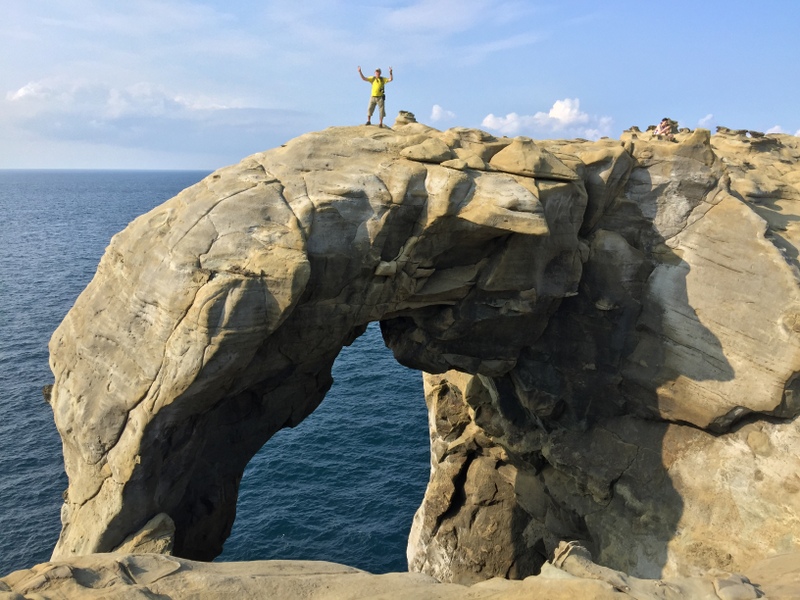 Here are a few more bizarre rock formations.
Here are a few more bizarre rock formations.
A long evening walk before he dropped us at Jiufen
In 2014 we had also stayed in Jiufen, a very attractive (but touristic) mountain village. Aric had booked accommodation with the same owner, but this time a different location. From the bedroom a nice view of the sea, deep down.
The next morning Lyu brought us to the Taipei airport. A very nice guy. After checking in there was enough time for lunch. NO seafood…:-)
A long report, with many pictures, because we did so many things…:-)



